Last week we told you about Cerebus in Hell #0, a new “fumetti” style comic strip by Dave Sim and Sandeep Atwal that uses Gustave Dore’s art and Sim’s captions to reveal the earthpig’s descent into the afterlife in a darkly humorous fashion. There will be a one shot, available in October, daily Cerebus in […]
Add a CommentViewing: Blog Posts Tagged with: Comic Strips, Most Recent at Top [Help]
Results 1 - 25 of 251
Blog: PW -The Beat (Login to Add to MyJacketFlap)
JacketFlap tags: Comic Strips, Dave Sim, Cerebus, cerebus in hell, Add a tag
Blog: Becky's Book Reviews (Login to Add to MyJacketFlap)
JacketFlap tags: 2016, books reviewed in 2016, graphic novels, cats, comic strips, review copy, Add a tag
The Misadventures of Grumpy Cat and Pokey, vol. 1 Ben McCool, Royal McGraw, Elliott Serrano, Ben Fisher, Steve Uy. 2016. Dynamite Entertainment. 104 pages. [Source: Review copy]
I didn't enjoy reading The Misadventures of Grumpy Cat (and Pokey!), at least not as much as I was expecting to--wanting to. I hoped my love of Grumpy Cat would outweigh my dislike of comic books. That wasn't the case at all. The portrayal of Grumpy Cat didn't really live up to my expectations either. More often than not, my reaction to a comic was: so what?
I wasn't expecting the weirdness in the collection: a couple of ghost stories, a time travel story, an alien encounter, and one about ancient Egyptian mummies.
Treasure Map--Grumpy Cat exerts a lot of energy in this one to set up Pokey for a trick: she buries a treasure map, pretends to be disinterested, refuses to cooperates, reluctantly agrees, dresses up as a ghost or two, etc. A "real" ghost ends this strip. I was less than enthused by this first comic.
Grumpy in HD--Grumpy gets Pokey and a dog into trouble with the humans in this one. It is about the remote control and how to "make" it work. It felt shorter and less annoying--which is a good thing.
Super-Pokey & Grumpy Cat in Paws of Justice--Pokey convinces Grumpy Cat to be his sidekick. Pokey having been inspired by watching superheroes on tv. There are costumes and everything. Can this duo prove heroic in the local neighborhood. This one is a bit over-the-top in a purely silly way. If I had to pick a favorite to like, it, might accidentally be this one.
Grumpy Cat Goes to Comic-Con--just one page, and, definitely one of the 'so what????' strips.
Cell Phone--Grumpy Cat and Pokey get into some trouble with a cell phone. At first Grumpy Cat was don't *try* to answer the phone, leave it alone, it's nothing but trouble waiting to happen. Then, she changes her mind when the human on the other end of the phone starts talking about bringing treats.
It doesn't end well for the cats.
Vincent Van Grump--In an effort to become famous, Grumpy tries her hand at singing, writing, and painting. Perhaps one of the better ones in the collection. At least it isn't otherworldly.
Grumpy Birthday to You--Grumpy Cat is grumpy about her birthday.
Detective Cats--Grumpy Cat and Pokey become detectives to solve a case--a case about missing food or missing treats or something like that. It was okay.
A Grump in Time--weird from start to finish and not in a good-weird way or a funny-weird way. Just weird-weird as in--so what????
Close Encounters of the Grumpy Kind--Pokey and Grumpy meet aliens. At this point I was ready for the book to be done already.
I Know What You Did Last Summer...I Just Don't Care--Fortunately there was just one more story. Unfortunately it was Halloween-themed. This one features the haunted house (again) and an Egyptian mummy-cat.
© 2016 Becky Laney of Becky's Book Reviews
Blog: PW -The Beat (Login to Add to MyJacketFlap)
JacketFlap tags: Top News, Ghost Busters, Locke & Key, Top Comics, Teenage Mutant, Movies, Conventions, Publishing, Star Trek, Publishers, Comic Strips, IDW, entertainment, bloom county, Wondercon, TMNT, angry birds, Add a tag
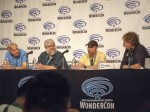 By Nicholas Eskey San Diego publisher IDW have grown steadily beyond their beginnings of comics. Though comics are still their main focus, the company in recent years has expanded beyond that and into other forms of entertainment. At this year’s Wondercon, IDW Entertainment represented by Dirk Wood, Vice Present of Marketing, David Hedgecock, Managing Editor, […]
By Nicholas Eskey San Diego publisher IDW have grown steadily beyond their beginnings of comics. Though comics are still their main focus, the company in recent years has expanded beyond that and into other forms of entertainment. At this year’s Wondercon, IDW Entertainment represented by Dirk Wood, Vice Present of Marketing, David Hedgecock, Managing Editor, […]
Blog: PW -The Beat (Login to Add to MyJacketFlap)
JacketFlap tags: Philosophy, Comic Strips, Plato, Top News, Instagram, Digital Comic, Allegory of the Cave, CTpokis, JTopkis, Add a tag
 A creatively vital use of an emerging medium
A creatively vital use of an emerging medium
Blog: Becky's Book Reviews (Login to Add to MyJacketFlap)
JacketFlap tags: Christmas, comic strips, children's classic, 2000, books reviewed in 2015, Add a tag
The Joy of a Peanuts Christmas: 50 Years of Holiday Comics. Charles M. Schulz. Introduction by Don Hall. 2000. Hallmark Books. 119 pages. [Source: Bought]
The Joy of a Peanuts Christmas is a collection of holiday-themed comic strips. Some are black-and-white, some are color. The book is divided into decades: 1950s, 1960s, 1970s, 1980s, and 1990s. The strips themselves are not in chronological order. Though strips that tell a continuing story are in order. Throughout the book, tribute is paid to each character: Charlie Brown, Pig-Pen, Lucy, Linus, Peppermint Patty, Sally, Woodstock, Schroeder, Snoopy, Marcie, Franklin, Spike.
I enjoyed this one very much. It felt very timeless. The characters didn't really change through the years. They remained in spirit very much the same which is one reason why I think it works so well.
Do I have a favorite character? Yes. Of course, I do. It's Linus!!! But I also love, love, love Snoopy.
Do I have a favorite comic strip? That would be harder to answer. There were so many I enjoyed within this collection. I liked Charlie Brown making so many snowmen in the February 22, 1953, strip. I liked Pig-Pen's dirtiest snowman in the January 6, 1955, strip. Lucy isn't my favorite by any stretch, but the December 21, 1959 strip made me smile. I thought the strip from December 19, 1958, was funny but also a little sad at the same time. In it, Linus suggests addressing Santa as "Dear, O, Mighty One'. Though essentially, anytime Linus is writing Santa or thinking about writing Santa I enjoyed it. And then, of course, there are the strips of Linus preparing to be a shepherd for the play. Loved those! Sally is another favorite, though not perhaps as much as Linus and Snoopy. I loved her hanging up dozens of tiny stockings (1966). In 1978, Sally wrote a report about Santa and his RAIN GEAR. But one of my favorites stars both Snoopy and Sally. It's from November 28, 1995.
Do you have a favorite character?
© 2015 Becky Laney of Becky's Book Reviews
Blog: PW -The Beat (Login to Add to MyJacketFlap)
JacketFlap tags: History, Comic Strips, Top News, Add a tag
The New York Times, which is the one newspaper that never ran comics strips, reverse engineers their insertion into Sunday papers as something of a novelty, instead of an elegy to the death of the newspaper itself. The occasion is a piece on a special 16 page color comics insert spotlighting the 100th anniversary of […]
Blog: PW -The Beat (Login to Add to MyJacketFlap)
JacketFlap tags: Comic Strips, bloom county, Berkeley Breathed, Top News, Add a tag
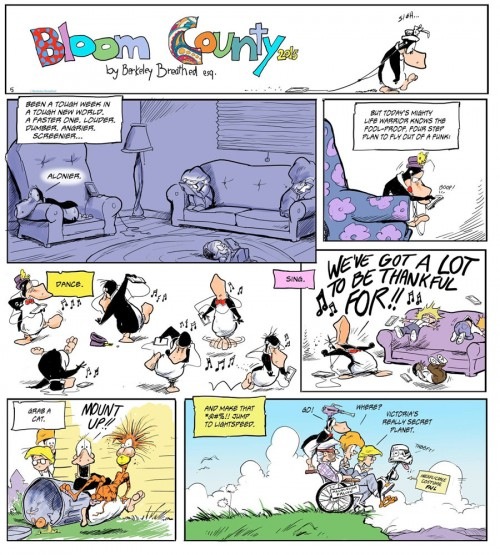
As promised, a new Bloom County comic strip is up—as promised, on Facebook of all places. Creator Berke Breathed announced the return during SDCC, and a lot of 90s kids are over the moon with this. The strip is appearing in a Sunday color format. On subsequent FB posts, Breathed has explained that Opus was jamming to “Thankful” by Glen Phillips, and so with this interactive method, he’as actualy emulating the most popular webcomics. Full circle!
Anyway welcome back, Opus! It wasn’t the same without you.
Blog: PW -The Beat (Login to Add to MyJacketFlap)
JacketFlap tags: Comic Strips, Andrews McMeel, Top News, SDCC '15, gocomics, Add a tag
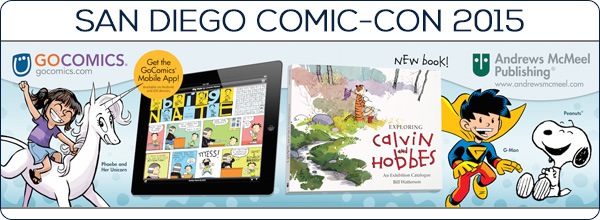
I remember the days when seeing a real live comic strip artist was rare indeed, but now they’re coming out of their shell! GoComics and Andrews McMeel (publisher of all those comic strips collections you love so much)will be at Comic-Con (Booth #1503) and lots of cool folks—from Dana Simpson to Stephen Pastis—and books—Peanuts! Cul de Sac!—will be there. Here’s the list:
• A selection of books for purchase, including the recently released “Exploring Calvin and Hobbes: An Exhibition Catalogue,” which includes a fascinating, in-depth interview with Bill Watterson; New York Times bestsellers from The Oatmeal (Matthew Inman), including his most recent release, “The Terrible and Wonderful Reasons Why I Run Long Distances”; “Breaking Stephan” by Stephan Pastis; and “Unicorn on a Roll: Another Phoebe and Her Unicorn Adventure” by Dana Simpson and “Big Nate: Say Good-bye to Dork City” by Lincoln Peirce, two recently released offerings from AMP! Comics for Kids, especially for middle-
• GoComics, the world’s largest online collection of syndicated and web-only comics, offers an online catalog and mobile app providing iconic comics such as Peanuts, Calvin and Hobbes, Dilbert, Garfield and FoxTrot as well as other popular comics, including The Argyle Sweater, Jim Benton Cartoons, Pearls Before Swine, Phoebe and Her Unicorn and Saturday Morning Breakfast Cereal (SMBC).
• Scheduled one-hour, free signings by creators including Brooke McEldowney (9 Chickweed Lane, Pibgorn), Dana Simpson (Phoebe and Her Unicorn), Greg Evans (Luann), Jason Chatfield (Ginger Meggs) and Stephan Pastis (Pearls Before Swine).
• Daily giveaways featuring free GoComics PRO memberships, bookmarks, buttons and other comic-related promotional items, as well as daily drawings for major comic collections, including “The Complete Calvin and Hobbes,” “The Complete Cul de Sac,” “The Complete Far Side” and “Celebrating Peanuts.”
• In honor of the 30th anniversary of Calvin and Hobbes, archive-quality prints of the iconic first and last Calvin and Hobbes comic strips will be available for purchase. To celebrate the 65th anniversary of Peanuts, an archive-quality print of the first-ever comic strip (available in color or black and white) will also be
• GoComics will host daily Twitter giveaways (Thursday through Sunday) featuring the “Dear Mr. Watterson” and “Stripped” documentaries in celebration of the 30th anniversary of Calvin and Hobbes (while
• In partnership with Peanuts Worldwide, SDCC attendees are encouraged to visit the Peanuts booth (#1637) and ask for a “GoComics Ticket.” Attendees who present this ticket at the Andrews McMeel Publishing/GoComics booth (#1503) will receive exclusive commemorative Peanuts prizes, including a collectible 65th anniversary poster, Snoopy buttons, bookmarks, tattoos and a coloring sheet for kids (while
• GoComics T-shirts featuring the slogan “Read Comics Every Day” will be available for purchase for $20. Follow GoComics (@GoComics) and Andrews McMeel Publishing (@AndrewsMcMeel) on Twitter using #GoComics and #AndrewsMcMeel for real-time updates about giveaways, signings and the location of street teams distributing comic-related items. The on-site teams from GoComics and Andrews McMeel Publishing will also share photos via Facebook, Twitter, Tumblr, Instagram and Pinterest.
Andrews McMeel Publishing/GoComics Signing and Event Schedule:
All creator signings will occur at the Andrews McMeel Publishing/GoComics Booth (#1503). Exclusive SDCC 2015 prints or posters will be provided for free at all creator signings.
Thursday, July 9
12:30 – 1:30 p.m.: Jason Chatfield (Ginger Meggs)
2:00 – 3:00 p.m.: Jim Benton (Jim Benton Cartoons)
3:30 – 4:30 p.m.: Lalo Alcaraz (editorial cartoonist; La Cucaracha)Friday, July 10
11:00 a.m. – 12:00 p.m.: Greg Evans (Luann)
12:30 – 1:30 p.m.: Brooke McEldowney (9 Chickweed Lane, Pibgorn)
2:00 – 3:00 p.m.: Dana Simpson (Phoebe and Her Unicorn)
3:30 – 4:30 p.m.: Paul Trap (Thatababy)Saturday, July 26
11:00 a.m. – 12:00 p.m.: Steve McGarry (Badlands, Biographic, KidTown, TrivQuiz)
12:30 – 1:30 p.m.: Stephan Pastis (Pearls Before Swine)
2:00 – 3:00 p.m.: Nick Seluk (The Awkward Yeti, Heart and Soul)
3:30 – 4:30 p.m.: Paige Braddock (creative director at Peanuts, Stinky Cecil, Jane’s World, The Martian Confederacy)
Blog: PW -The Beat (Login to Add to MyJacketFlap)
JacketFlap tags: Reuben Awards, Awards, Comic Strips, NCS, roz chast, Top News, Add a tag
The Reuben Awards were given out over the holiday by the National Cartoonists Society, and Roz Chast won the Reuben Award, a once in a lifetime trophy only bestowed on the finest cartoonists. Chast is only the third woman to win the Reuben—Lynn Johnston won in 1985 and Cathy Guisewaite in 1993—and she beat out Hilary Price and Stephen Pastis for the honor, mostly on the strength of her graphic novel Can’t We Talk About Something More Pleasant, a book that has racked up a ton of awards and acclaim for Chast, along with a $250,000 prize.
The rest of the divisional winners are as follows:
Magazine Feature / Magazine Illustration
Tom Richmond
Newspaper Illustration
Anton Emdin
Greeting Card
Glenn McCoy
TV Animation
Patrick McHale, Creator (Over The Garden Wall)
Feature Animation
Tomm Moore, Director, (Song of the Sea)
Advertising / Product Illustration
Ed Steckley
Book Illustration
Marla Frazee (The Farmer and the Clown)
Magazine Gag Cartoon
Liza Donnelly
Graphic Novel
Jules Feiffer (Kill My Mother)
Comic Book
Jason Latour (Southern Bastards)
Online Comics – Short Form
Danielle Corsetto (Girls with Slingshots)
Online Comics – Long Form
Minna Sundberg (Stand Still, Stay Silent)
Newspaper Panel Cartoon
Hilary Price (Rhymes with Orange)
Editorial Cartoon
Michael Ramirez
Newspaper Comic Strip
Stephan Pastis (Pearls Before Swine)
The Reuben Award
Roz Chast
Special honorees this year were Mort Drucker and Jeff Keane. The kudos were handed out at the annual NCS dinner, held this year in Washington DC, and Michael Cavna was there to record the scene, which like just about everything else in comics, was notable for featuring six female winners, a record!
On Saturday night, in a ballroom holding hundreds of top cartoonists, the organizers might as well have piped in Taylor Swift’s “Shake It Off,” because for only the third time in the event’s six-decade-plus history, a woman — the New Yorker’s Roz Chast — received the group’s big honor, the Reuben Award for Outstanding Cartoonist of the Year. And her trophy capped what may well be the event’s winningest night ever for female writers and artists, as six women won in the 16 competitive categories.
Tom Spurgeon has a little commentary on the winners here, and notes that the NCS has to move forward, just as newspapers make up less and less of the cartooning world, hence the awards for animation and graphic novels and webcomics, while still battling a bit of “old skool” sensibilities as an organization. I would say that Girls with Slingshots is exactly the kind of webcomic that you’d expect the NCS to honor—but it’s also a webcomic deeply deserving of recognition. So despite the changing of the guard nature of the awards they kind of turned out okay.
Blog: PW -The Beat (Login to Add to MyJacketFlap)
JacketFlap tags: Top News, georgia dunn, breaking cat news, Books, Webcomics, Comic Strips, Add a tag
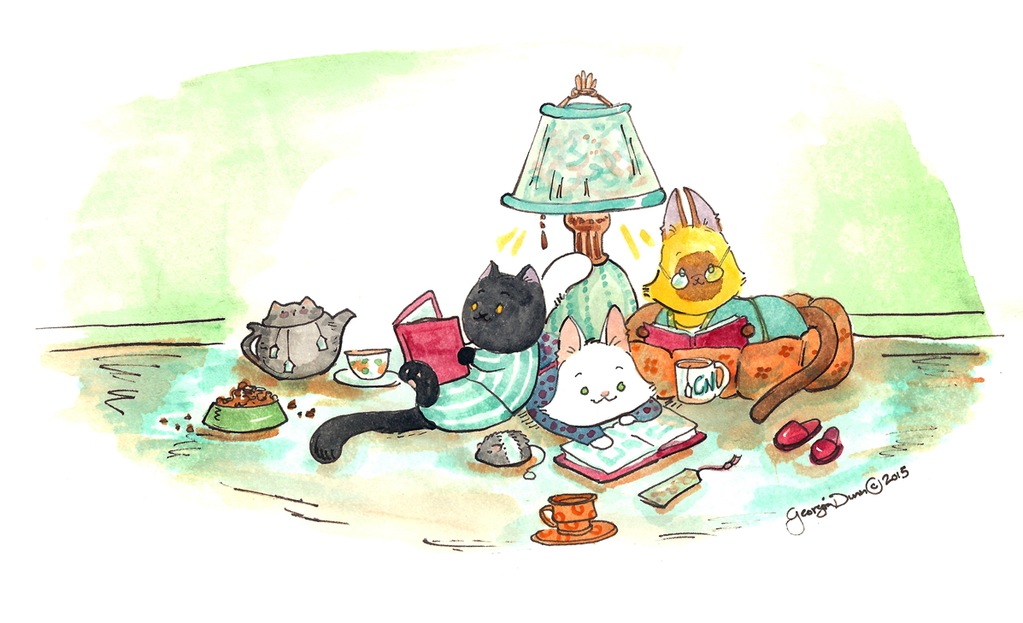
BREAKING CAT NEWS about, well, BREAKING CAT NEWS! @UniversalUclick and @gocomics are publishing a BCN book in 2016!!! pic.twitter.com/QSclyit7LF
— Georgia Dunn (@pseudooctopus) May 15, 2015
We’ve been big fans of Georgia Dunn’s Breaking Cat News for quite a while, laughing with the boys’ in depth reporting on stupid human tricks, and shedding a tear over Elvis’s holiday adventure. You may have gotten tired of cat humor, but frmaing it in terms of cable news tropes gives everything a fresh spin. The strip has been running on GoComics for a while, and now Universal has done the smart thing and ordered a print collection. Cats+comics = the 21st century.
Dunn has been on maternity leave for the last few weeks, an event sure to inspire many more investigations. You can listen to an interview with Dunn here at Publishers Weekly’s More To Come podcast
Blog: PW -The Beat (Login to Add to MyJacketFlap)
JacketFlap tags: News, History, Old Comics, Culture, Superman, original art, Comic Strips, IDW, Joe Shuster, Jerry Siegel, Jack Kirby, MoCCA, Society of Illustrators, Stan Lee, Craig Yoe, Milt Gross, Top News, Yoe Books, dick ayers, fay king, fin fang foom, Add a tag
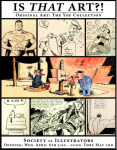 This exhibit of works from Craig Yoe’s original art collection has already garnered stellar accolades – tonight you can see why. And that’s not all …
This exhibit of works from Craig Yoe’s original art collection has already garnered stellar accolades – tonight you can see why. And that’s not all …
I had the good fortune of seeing an early preview of Is That Art? at the Society of Illustrators a few weeks ago, and it’s a must-see for anyone who wants to connect with the magic and the power of creative design. The exhibit covers much of the first century of comics & cartoon art, and the work is displayed in ways that highlight deep connections and spark new ideas. A original Spark Plug parallel to a Peanuts strip where Snoopy is dismissed as a dog; a landmark portrait of Superman for Siegel-and-Shuster’s syndicate chief near a reflection on a woman’s dual identity by Fay King; the first Pogo newspaper strip; the original Fin-Fang-Foom-awakes page, signed by Stan Lee, Jack Kirby, and Dick Ayers ….

I could go on, but I’ll leave you to discover all the wonders for yourself. The exhibit’s official opening is tonight from 5pm – 10pm at the Society of Illustrators, 128 E. 63rd St. in New York City. If you can’t make it this evening (or at all, alas), you can find some consolation in the extensive Yoe! Books library, which includes lavish and faithful restorations of material ranging from kitsch to classics. One place to start: the latest Yoe! Books/IDW publication, Milt Gross’ New York, which has been receiving impressive reviews.

If you can make it to the Society of Illustrators, don’t miss its other must-see exhibits. The original art from Little Nemo: Dream Another Dream is up through tomorrow (April 9), and seeing it at full size reminded me of seeing the original art for Robert Crumb’s Book of Genesis at the Hammer Museum – a revelation. As for the exhibit on Alt-Weekly Comics curated by Warren Bernard and Bill Kartalopoulos, well, that too deserves a book of its own – this exhibit is important not just for chronicling an influential, if under-appreciated genre within North American comics, but for helping us understand the world today.
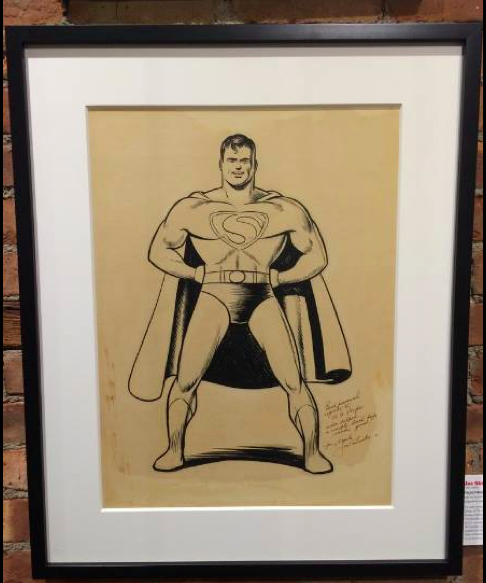
Blog: PW -The Beat (Login to Add to MyJacketFlap)
JacketFlap tags: Top News, Reuben Awards, Awards, Comic Strips, Add a tag
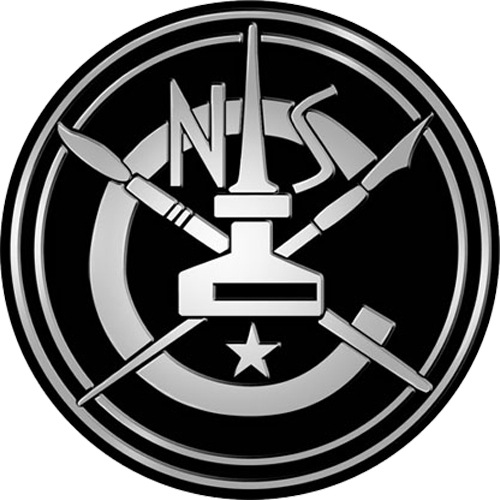
And, following the announcement that Roz Chast, Hilary Price and Stephen Pastis were up for THE Reuben, the nominees in the divisional awards have been announced by the National Cartoonists Society. The comics division has some new faces, led by Babs Tarr , who, it must be said, has had a meteoric, and well deserved, rise in the comics world. And the This One Summer juggernaut continues with a nod for Jillian Tamaki in the graphic novel category. The webcomics categories also show real diversity in format and esthetic since the category was initiated. GOOD STUFF.
Winners will be announced at the annual NCS banquet during the annual meeting.
Editorial Cartoons
Clay Bennett
Michael Ramirez
Jen Sorensen
Newspaper Illustration
Anton Emdin
Glen LeLievre
Ed Murawinski
Feature Animation
Paul Felix (production designer: “Big Hero 6”)
Tomm Moore (Director: “Song of the Sea”)
Isao Takahata (Director: “The Tale of Princess Kaguya”)
TV Animation
Mark Ackland (Storyboards- “The Void” : “Wander Over Yonder)
Patrick McHale (Creator “Over the Garden Wall”)
Kyle Menke (storyboards- “Star Wars” parody episode “Phineas and Ferb”)
Newspaper Panels
Dave Blazek (Loose Parts)
Mark Parisi (Off the Mark)
Hilary Price (Rhymes with Orange)
Gag Cartoons
Liza Donnelly
Benjamin Schwartz
Edward Steed
Advertising/Product Illustration
Kevin Kallaugher
Ed Steckley
Dave Whammond
Greeting Cards
Gary McCoy
Glenn McCoy
Maria Scrivan
Comic Books
Jason Latour (Southern Bastards)
Babs Tarr (Batgirl)
J.H. Williams III (The Sandman Overture)
Graphic Novel
Jules Feiffer (Kill My Mother)
Mike Maihak (Cleopatra in Space)
Jillian Tamaki (This One Summer)
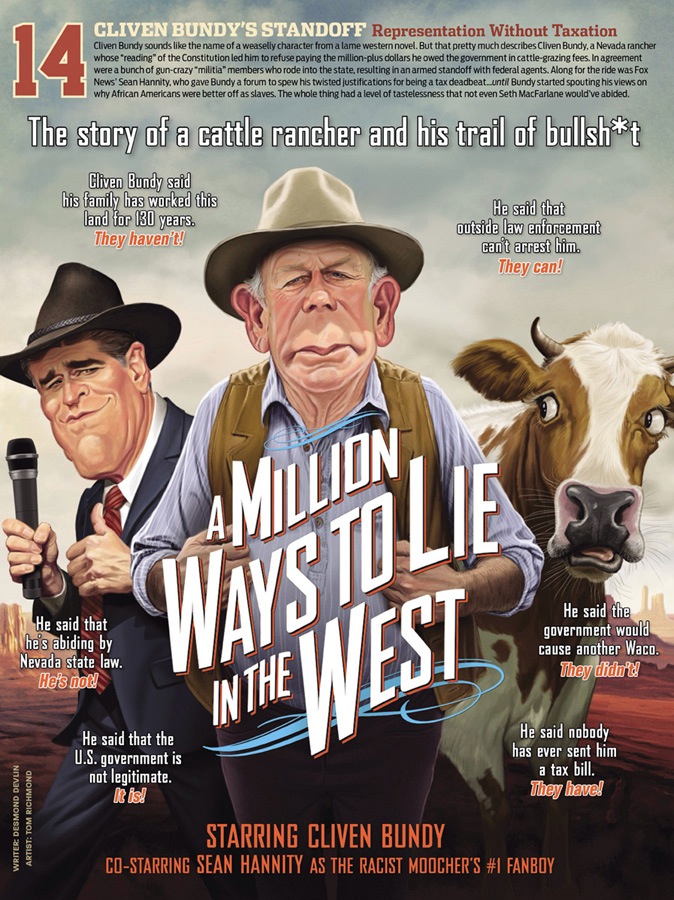
Magazine Illustration
Ray Alma
Anton Emdin
Tom Richmond (above)
Online – Long Form
Vince Dorse (The Untold Tales of Bigfoot)
Mike Norton (Battlepug)
Minna Sundberg (Stand Still, Stay Silent)
Online – Short Form
Danielle Corsetto (Girls with Slingshots)
Jonathan Lemon (Rabbits Against Magic)
Rich Powell (Wide Open)
Book Illustration
Marla Frazee “The Farmer and the Clown”
Yasmeen Ismail “Time for Bed, Fred”
Shaun Tan “Rules of Summer”
Newspaper Comic Strips
Brian Basset (Red and Rover)
Stephan Pastis (Pearls Before Swine)
Glenn McCoy (The Duplex)
Blog: PW -The Beat (Login to Add to MyJacketFlap)
JacketFlap tags: Interviews, History, Comics, Culture, Comic Strips, 2000AD, Alan Moore, Top News, Add a tag
Here’s the sixth part of my interview with the late Steve Moore, with more to follow. The 1st, 2nd, 3rd, 4th, and 5th parts are already online, along with some explanation of how the interview came about.
One note on the text, which is particularly relevant in this section, so worth repeating: As we went along, I would ask supplementary questions, which got inserted into the previous text. To make it clear where a question has been added in later, I’ve included little arrows for those subsidiary questions, like this: ->. Occasionally, there were further questions, which are indicated by an ever expanding length of arrow, like this –> or this —>. Hopefully this will help to understand how the interview unfolded. So…
PÓM: You were a young man in a very vibrant and modern London, at that time. Did you have any interaction with the kind of things we hear about it, like the emerging drug culture?
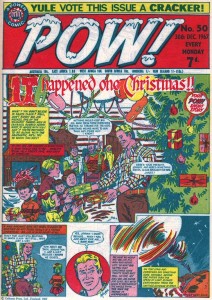 SM: Well, I had a couple of nice hippy bells [bell-bottom jeans, for those of you too young to know what he's talking about - PÓM] when I was working on Pow! (Ken Mennell was most derisive!) But in many ways I was more of a passive participant. I read things like International Times and Oz and I bought psychedelic albums by people like Pink Floyd and Jimi Hendrix, and occasionally I’d go to hip bookshops like Indica and Compendium (and, of course, Bookends was quite hip, though that was 1972, rather than the late 1960s). But I didn’t go on protest marches and I rarely went to see bands or to events like the 14 Hour Technicolor Dream at the Alexandra Palace (and I rather missed out on the ‘free love’ too, unfortunately). I listened to John Peel’s Perfumed Garden show on Radio London in the summer of 1967, and he encouraged listeners to meet up, wearing Perfumed Garden badges to identify one another. So I made myself a badge and when a meeting was announced on the radio at Greenwich Park I went off and met a few people. I’d guess there were about a dozen people there, one of whom was Phil Bevan, with whom I became quite friendly for a few years, and who also worked at Fleetway House for a while as an art assistant, shortly before I left. We produced a little booklet together for the fanzine market in 1971 called Doomlore, a rather twee fantasy story that I wrote and he illustrated, and he also contributed to the unpublished Orpheus #2. And we’d occasionally drop acid together.
SM: Well, I had a couple of nice hippy bells [bell-bottom jeans, for those of you too young to know what he's talking about - PÓM] when I was working on Pow! (Ken Mennell was most derisive!) But in many ways I was more of a passive participant. I read things like International Times and Oz and I bought psychedelic albums by people like Pink Floyd and Jimi Hendrix, and occasionally I’d go to hip bookshops like Indica and Compendium (and, of course, Bookends was quite hip, though that was 1972, rather than the late 1960s). But I didn’t go on protest marches and I rarely went to see bands or to events like the 14 Hour Technicolor Dream at the Alexandra Palace (and I rather missed out on the ‘free love’ too, unfortunately). I listened to John Peel’s Perfumed Garden show on Radio London in the summer of 1967, and he encouraged listeners to meet up, wearing Perfumed Garden badges to identify one another. So I made myself a badge and when a meeting was announced on the radio at Greenwich Park I went off and met a few people. I’d guess there were about a dozen people there, one of whom was Phil Bevan, with whom I became quite friendly for a few years, and who also worked at Fleetway House for a while as an art assistant, shortly before I left. We produced a little booklet together for the fanzine market in 1971 called Doomlore, a rather twee fantasy story that I wrote and he illustrated, and he also contributed to the unpublished Orpheus #2. And we’d occasionally drop acid together.
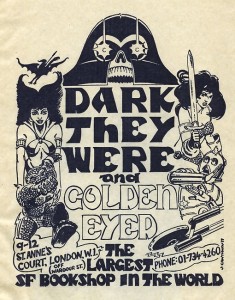 From which you’ll gather that, if I had a fairly marginal involvement with the culture, I had an amiable relationship with the drugs. I first smoked hashish in 1969 with the set of friends I mentioned that had gathered round the founding of Dark They Were and Golden Eyed and, of course, they’re absolutely right when they say it can lead you to much more addictive drugs. In my case, it was tobacco. I only started smoking cigarettes as a result of smoking dope, and that was a habit I didn’t kick until 2000.
From which you’ll gather that, if I had a fairly marginal involvement with the culture, I had an amiable relationship with the drugs. I first smoked hashish in 1969 with the set of friends I mentioned that had gathered round the founding of Dark They Were and Golden Eyed and, of course, they’re absolutely right when they say it can lead you to much more addictive drugs. In my case, it was tobacco. I only started smoking cigarettes as a result of smoking dope, and that was a habit I didn’t kick until 2000.
Hashish was something I mainly indulged in when it was easily available, as it was at Bookends and during the time I worked at and hung out at DTWAGE, especially in the final years in St. Anne’s Court, when it was delivered by motorcycle courier. Otherwise, friends would get it for me when they got theirs; I had very little contact with actual dealers. So a lot of my work in the first period of my comic career, from 1972 to the late 1980s, was written on dope; I seem to recall this was particularly the case on Warrior. These days I can’t work on it at all, but since I gave up smoking I’ve had to eat it, and that can have a tendency to just wipe out all inclination to work anyway. Especially the way I tend to overdo it.
There were psychedelics around in the late 1960s and early 1970s as well, of course, though I tended to be a bit timid about those. Where friends would say ‘I’m taking two (or three) tabs of acid!’ I’d tend to say ‘I think I’ll stick to one.’ As a result I rarely got completely blitzed, though I had some interesting experiences; but I think I liked to stay in control a bit too much (though that hasn’t stopped me, on occasion, eating so much hashish I passed out, or laughed so much I went into cataplectic fits). There were a few LSD trips, a couple with mescaline (if that was, in fact, what was in the tablet it was sold as) and rather more with psylocybin mushrooms, which are probably my favourite psychedelic, though I hardly ever indulge these days.
When things got tough at Bookends, toward the end, we resorted to amphetamines for a while, to get the work done, which isn’t at all a good idea; and, being available during the late 1970s when I was hanging out at DTWAGE, I indulged again for a little while (though never since). If someone offered me a free line of cocaine I wouldn’t say no, and I smoked opium once or twice, but it only put me to sleep and didn’t do anything. Heroin and barbiturates I stayed well away from, though, as I could see the damage they were doing to people I knew. So it’s really mainly been hashish.  I’ve tended to steer clear of modern, laboratory-made drugs, preferring stuff that occurs naturally. But I’m really not into ‘drug culture’ the way some ageing hippies are. If somebody says ‘Oh, but you must try so-and-so!’ I just say ‘no’, these days.
I’ve tended to steer clear of modern, laboratory-made drugs, preferring stuff that occurs naturally. But I’m really not into ‘drug culture’ the way some ageing hippies are. If somebody says ‘Oh, but you must try so-and-so!’ I just say ‘no’, these days.
And if you ask: ‘can drugs increase creativity?’ I’d probably say, on balance, that for me, they probably haven’t, though I know some people would have a different view; but they probably haven’t decreased it, either. I neither advocate nor oppose them. When they were there, I took them; when they weren’t, I got on without them. That’s life…
PÓM: You mentioned you thought some of the Chinese clubs might have been run by Triads. Did you have any proof of this, or indeed any contact with the Triads, as you became more immersed in Chinese culture?
SM: No, I can’t prove they were run by Triads, though I rather suspect it. The best I can say is that this is what’s known as ‘informed speculation’. But it turned out that my friend, the young kid who’d been working as a projectionist and letting me in to the movies for free, quite separately managed to get involved with the Triads, and not in a very pleasant way.
For reasons that will soon become apparent, I’m going to call him ‘Chang’, though that wasn’t his real name. Well, by the end of the 1970s, the cinema clubs were starting to close down, to be replaced by Chinatown video hire shops, which meant that I lost touch with my beloved Chinese movies until the advent of the home video market in the mid-1980s. It also meant that Chang lost his job. By then he was in his early 20s and married to a Chinese immigrant who’d illegally entered Hong Kong, and they had a baby, so without the projectionist job he then started working in a takeaway restaurant in Watford. When he was back in London, I’d occasionally meet him for lunch, often accompanied by his equally young Scottish friend ‘Peter’ (again, not his real name), who seemed nice enough. And then the lunches stopped, and we just sort of drifted apart.
Then a couple of years later, in the early 1980s, Chang suddenly turned up on my doorstep (I think on a Saturday morning), in something of a state, which I eventually realised was fear. So I got him on his own (my mother and brother were still here) and a rather complex story came out. It seemed that, like many Chinese, Chang was fond of gambling, and he told me he’d borrowed £500 from a Triad loan-shark to get himself a stake. Obviously, that was worth rather more back in those days than it would be now. I think Chang had been mainly gambling on arcade gaming-machines in Soho but, unsurprisingly, he’d lost all the money. I don’t know what the interest would have been – probably something like 10% a week – but now the Triads wanted their money back, and they meant ‘now’, not ‘soon’. So he was sleeping in his car and hoping they wouldn’t find him.
Chang, however, had a novel solution in mind, involving Peter – of whom, it seemed, I’d gained a rather mistaken impression. Instead of being the innocent young kid I thought, it turned out he was actually both gay (I hadn’t realised) and an armed robber, who sometime previously had attempted to mug a pensioner at Waterloo. Things went wrong, however, when the pensioner not only fought back, but started chasing him as well, at which point Peter turned round and shot the man in the head, leaving him in a vegetative state. He then fled to Thailand with his Thai boyfriend, and I think was about to return now that the heat had died down a bit.
So Chang’s plan was to turn Peter in for the £1500 reward that had been offered, and use the money to pay off his Triad creditor. The only problem with this plan was that the reward wouldn’t be paid out until a conviction was obtained, so he wanted to stay with me in the meantime, in the hope that the Triads wouldn’t look for him here.
I still have very mixed feelings about my reaction to this (I’m not sure it was my finest hour), but I’d had a fairly sheltered upbringing with no direct contact with the underworld, and I really didn’t want my aged mother opening the door to a bunch of armed Triad thugs if they turned up looking for Chang. Or my brother or myself, come to that. I asked Chang if there was anywhere else he could go, and he said he knew someone in Manchester (which itself was a Triad hotbed, so I’m not sure this was the best option). So I gave him a blanket and all the money I had in my wallet, which I think was about £70, and off he went. I never heard from him again, so I don’t know what happened about the plan to shop Peter to the police, or whether Chang sorted out his differences with the Triads. But I find it very difficult to think of a particularly positive ending to the story. Perhaps it’s better not to know…
So that’s as close as I got to the Triads and, frankly, even that was rather closer than I wanted to get. But I still sorta hope that Chang managed to get out of that scrape … somehow …
PÓM: What sort of amount of work were you producing at that time?
SM: I’ve a feeling things may have been a bit slack around 1975/76, and that may have been the period when for a few months I worked a couple of days a week at DTWAGE. Each year I had the annuals to carry me through from about September to February, and on average there’d be four or five books to work on. I also know I did a few projects that never saw publication – I particularly remember doing a comic-strip adaptation of Stevenson’s Treasure Island for someone (which was the first time I’d actually read the book, and I found it far more enjoyable than I’d expected), but it never appeared. That may have been around this time. And it was probably around then that I was writing the movie scripts. But work started to pick up with House of Hammer, and then at the beginning of 1977 there was 2000 AD and in 1978 Hulk Comic, followed by Dr Who and Warrior. So the end of the ’70s and the beginning of the ’80s was one of my busiest periods of comic-book writing. I never made a fortune and (as I may have said earlier), if I’d had a mortgage to pay and a family to support I would have been in some difficulty. But I had enough to buy books, which has always been my first priority!
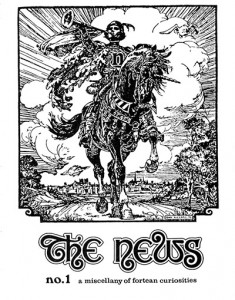 And apart from the paying work, I was writing stuff for Fortean Times as well. I had a regular oriental column around then called ‘Tales from the Yellow Emporium’ (a pun on the legendary Chinese ruler, the Yellow Emperor), and I’d write up archaeological stories, and occasionally more regular Fortean material. So I kept myself busy.
And apart from the paying work, I was writing stuff for Fortean Times as well. I had a regular oriental column around then called ‘Tales from the Yellow Emporium’ (a pun on the legendary Chinese ruler, the Yellow Emperor), and I’d write up archaeological stories, and occasionally more regular Fortean material. So I kept myself busy.
PÓM: Did you do any work for Dez Skinn while he was in charge of Marvel UK?
SM: Yes, quite a bit. Dez moved to Marvel UK shortly after HoH folded, and started Hulk Comic at the beginning of 1979. The first issue came out in March, so there would have been a bit of lead-time before then when we were working on this. Dez had the idea that we should do original material featuring Marvel heroes, but tailored for the British market, and I think this was around the time of the Hulk TV series with Lou Ferrigno. This was alongside the reprint material as well, so I think the early issues actually had two Hulk strips in each issue, one reprint, one original. I’m pretty sure I wrote at least some of the Hulk stories, though I can’t remember if I wrote all the original stories or shared them with Steve Parkhouse. The main thing I wrote for this, though, was Nick Fury, which I think ran for the first 19 issues. This was drawn by Steve Dillon, who was about 16 at the time, and it may well have been his first strip. I don’t think I actually met Steve when we were doing this. It was still the time when for the most part a writer would have no idea of who’d be drawing his script, and no contact with the artist; a situation that I think only really started to change when Warrior began, at which point I worked very closely with Steve.
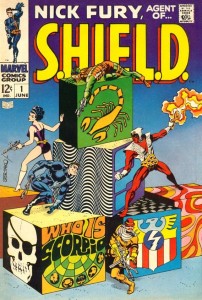 I haven’t looked at Nick Fury for many years, so I’ve no idea how good it was, but I remember really enjoying writing it. The original strip had been one of my favourites, especially when Jim Steranko was drawing it, and it was the sort of non-superhero adventure that I liked to do. Writing it was also very influential on my later work, as the ‘tough dude with smart dialogue’ that was Fury influenced my characterisation of both Abslom Daak and the straight, non-underground version of Axel Pressbutton, though obviously in both cases this got twisted up with a lot of other weird stuff that went into them too.
I haven’t looked at Nick Fury for many years, so I’ve no idea how good it was, but I remember really enjoying writing it. The original strip had been one of my favourites, especially when Jim Steranko was drawing it, and it was the sort of non-superhero adventure that I liked to do. Writing it was also very influential on my later work, as the ‘tough dude with smart dialogue’ that was Fury influenced my characterisation of both Abslom Daak and the straight, non-underground version of Axel Pressbutton, though obviously in both cases this got twisted up with a lot of other weird stuff that went into them too.
Eventually the original strips were dropped, presumably because they were less economical than the reprints. And, of course, by then we were starting work on Dr Who Weekly, the first issue of which appeared in October 1979. So I just moved from one to the other, and kept on working for Dez.
PÓM: How aware were you of what else was going on in the UK comics business at that time? Pat Mills and the like seemed in particular to be trying to push what they could get away with.
SM: I was hardly aware of anything at all except what I was working on. Since I’d gone freelance I wasn’t really reading comics for pleasure and no longer considered myself a fan, and I’d never even heard of Pat Mills before 2000 AD. I’d really kept away from IPC, once I’d dropped writing the odd Slowcoach story for Whizzer and Chips (okay, apart from Mirabelle!) as I didn’t like their editorial attitudes when it came to handling scripts, and I much preferred to work for relatively smaller companies, rather than a big corporation like IPC, with its corporate attitudes. I gather that Pat was doing some fairly progressive stuff on Action and Battle, but Battle was a war comic, which of course was revolting to me, so I wouldn’t have gone anywhere near it. And, besides, I really hadn’t envisaged working for IPC again until 2000 AD came along, which only interested me because it was an SF comic.
 PÓM: Did you end up writing for any of those new titles? I’m primarily thinking of 2000 AD here, of course.
PÓM: Did you end up writing for any of those new titles? I’m primarily thinking of 2000 AD here, of course.
SM: It was basically just 2000 AD, though before we talk about that I’d just like to briefly mention the short-lived comic Tornado as it’s a good illustration of my relationship with IPC. Tornado was a mixed action and adventure comic that started in 1979, under the editorship of Kelvin Gosnell, and only lasted 22 issues. I was already working for 2000 AD by this time, and Kelvin asked me to contribute a short strip starting in Tornado’s first issue. He may actually have asked me for a historical story, but anyway I persuaded him to take a three-issue series, which was a true story about the Japanese warrior-monk, Benkei, who lived in the 12th century and was eventually killed by his enemies. There was enough adventure in his life for me to make a decent little three-part series, but I was basically writing a historical biography of a real person, ending with his heroic death. When the comic eventually appeared I found they’d altered the ending into something much more optimistic. I haven’t got a copy to hand, but I seem to remember they’d changed it so that Benkei actually escaped his enemies and ‘became a legend’. This they’d done without consulting me, and they’d put my name on the strip, which, to anyone who knew about Benkei, would have made me look a complete idiot. I was so annoyed I never worked for Tornado again.
I can’t remember exactly how I got involved with 2000 AD. I think I must have heard about it over the grapevine from someone, and it was an SF comic so I got in touch with them, rather than them approaching me. I think at the time my only other work was House of Hammer and the annuals, so I was looking for a bit of extra work. But I never actually felt comfortable working for it, for a number of reasons. One of them was the thing I just mentioned about IPC being a large corporation, and whereas I always felt with a smaller company that I was working with the editor as a collaborator, with IPC I always felt I was working for them, as a hired hand. Successive editors of 2000 AD have always given me the impression that they thought it was an enormous privilege to work for it, and that I should be grateful – presumably because they always had lots of other people wanting to get in on the act. The only editor who I actually felt made me welcome was Andy Diggle, when I returned to work for the title in 2000. I also used to feel that the editors and contributors formed a sort of clique that went to conventions and on signing tours together, and from what I hear a lot of them are heavy drinkers. As I’m not a drinker and can think of nothing more ghastly than spending an evening with a bunch of drunks talking about comics, I never really penetrated the clique, and always felt something of an outsider. And lastly, of course, I don’t actually like the comic that much.
I always thought Judge Dredd was utterly loathsome (though I did write one short strip for an annual). I appreciate that it was often beautifully drawn and that John Wagner’s a good writer, and I’m also told that it’s supposed to be satirical on occasion, but it espouses execution without trial and is basically about a personality-free fascist who I find about as entertaining as that hilarious Mister Hitler. 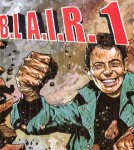 Then there are the thinly disguised IPC war stories like Rogue Trooper, and B.L.A.I.R.1, the side-splitting super-adventures of that notorious war-criminal Tony Blair. What could they have been thinking of? Even when I was working for 2000 AD, I couldn’t actually bring myself to read the rest of the comic. And I absolutely hated Tharg, which I thought was utterly stupid and childish, and brought down the tone of what I was given to believe was supposed to be aspiring toward a slightly more adult comic. I still feel the same way – and of course, they’re still continuing with the same dim-witted puerility, even though I gather that the average age of a 2000 AD reader these days is somewhere between 30 and 40. But if they’ll still put up with something as irritating as Tharg, I’m not sure exactly how the term ‘adult’ applies here.
Then there are the thinly disguised IPC war stories like Rogue Trooper, and B.L.A.I.R.1, the side-splitting super-adventures of that notorious war-criminal Tony Blair. What could they have been thinking of? Even when I was working for 2000 AD, I couldn’t actually bring myself to read the rest of the comic. And I absolutely hated Tharg, which I thought was utterly stupid and childish, and brought down the tone of what I was given to believe was supposed to be aspiring toward a slightly more adult comic. I still feel the same way – and of course, they’re still continuing with the same dim-witted puerility, even though I gather that the average age of a 2000 AD reader these days is somewhere between 30 and 40. But if they’ll still put up with something as irritating as Tharg, I’m not sure exactly how the term ‘adult’ applies here.
But work was work and, besides, at the beginning I didn’t really know what direction the comic would be going. I was well-established enough by that time for them to offer me the second story-arc on the revamped Dan Dare, which I think ran from about issue 12 to 20, or something like that, and was drawn by Bellardinelli, an artist who didn’t appeal to me much at all. All I can remember about the story is that the villain had two heads, which argued with each other. I didn’t much like the new Dan Dare, and maybe it showed, because they didn’t offer me another series on it.
 So after that, they asked me to write short stories as filler material, which is what turned out to be the Future Shock series (though the fact that they were then called ‘Tharg’s Future Shocks’ and were given dumb introductions pissed me off – as did being described as a ‘script robot’). Essentially I based the format on the old EC twist-ending SF stories and they’ve been doing the same thing ever since. I think I wrote the first dozen or so and, interestingly, the first few could be written to different page-lengths, just depending on how the story came out. I seem to remember writing one that was only two pages long, though later they settled into a more standard five-page format. I think they then began bringing in other writers, though I wrote a few more. And that was pretty much my first period of involvement with 2000 AD. I then got enough work with Marvel UK, and was happy to leave 2000 AD behind.
So after that, they asked me to write short stories as filler material, which is what turned out to be the Future Shock series (though the fact that they were then called ‘Tharg’s Future Shocks’ and were given dumb introductions pissed me off – as did being described as a ‘script robot’). Essentially I based the format on the old EC twist-ending SF stories and they’ve been doing the same thing ever since. I think I wrote the first dozen or so and, interestingly, the first few could be written to different page-lengths, just depending on how the story came out. I seem to remember writing one that was only two pages long, though later they settled into a more standard five-page format. I think they then began bringing in other writers, though I wrote a few more. And that was pretty much my first period of involvement with 2000 AD. I then got enough work with Marvel UK, and was happy to leave 2000 AD behind.
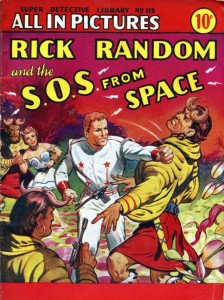 I returned in the early 1980s (when the editor was Steve McManus, who I found smug, arrogant and unsympathetic) to write some more Future Shocks and, of course, by then Alan Moore was writing them too, so we used to have a bit of a private competition to see just how far we could push the ideas and still get away with it. And at that time I also got the chance to write a revived series of Rick Random, a strip I’d loved back in the 1950s Super Detective Library, and with Ron Turner, the original artist. Apart from beefing the action up a little for a 2000 AD audience, I tried to write it fairly straight … more a tribute than an updated revision … and I think it was about six episodes long. I was really pleased with it until the last episode appeared in print, at which point it turned out that, for some reason I never discovered, Turner hadn’t finished the strip, and (of course, without informing me) they’d given the last episode to Carlos Ezquerra, an artist I hated anyway, and one who really couldn’t have been further away in style from Turner, and who made no attempt to emulate what Turner had already done. If they’d given the episode to someone like Dave Gibbons I would have understood it, and it would probably have been a reasonably close match – but they gave it to Ezquerra. So, you won’t be surprised to hear that after that I didn’t work for 2000 AD again for another fifteen years or so.
I returned in the early 1980s (when the editor was Steve McManus, who I found smug, arrogant and unsympathetic) to write some more Future Shocks and, of course, by then Alan Moore was writing them too, so we used to have a bit of a private competition to see just how far we could push the ideas and still get away with it. And at that time I also got the chance to write a revived series of Rick Random, a strip I’d loved back in the 1950s Super Detective Library, and with Ron Turner, the original artist. Apart from beefing the action up a little for a 2000 AD audience, I tried to write it fairly straight … more a tribute than an updated revision … and I think it was about six episodes long. I was really pleased with it until the last episode appeared in print, at which point it turned out that, for some reason I never discovered, Turner hadn’t finished the strip, and (of course, without informing me) they’d given the last episode to Carlos Ezquerra, an artist I hated anyway, and one who really couldn’t have been further away in style from Turner, and who made no attempt to emulate what Turner had already done. If they’d given the episode to someone like Dave Gibbons I would have understood it, and it would probably have been a reasonably close match – but they gave it to Ezquerra. So, you won’t be surprised to hear that after that I didn’t work for 2000 AD again for another fifteen years or so.
PÓM: I know that yourself and Alan Moore are friends, and have worked together on many things over the years. Do you remember how the pair of you first got in touch with one another, and when you first met?
SM: This is a bit vague, but Alan and I spoke about this recently and I think we’ve got it sorted out. Before organising the first UK Comic Convention, Phil Clarke put out a sales list called The Comic Fan (this is to be distinguished from The Comic Fan Special, which was the bulletin of the Convention), and I printed the lists off for him on my duplicator. In the second issue, as well as advertising Ka-Pow #1, there was an advert from me, because, being besotted with the TV Avengers at the time, I was looking for a novelisation called Dead or Alive. Alan saw those ads, wrote to me, and so the correspondence started.
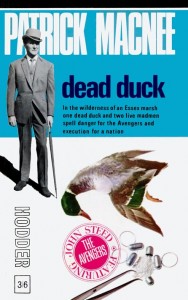 Unfortunately, that issue of The Comic Fan carries no date, but as Ka-Pow #1 had already been published, it was some time after July 1967. The odd thing about this, though, is that Dead or Alive is a book that never existed. At the time, Hodder published a couple of Avengers novels, credited to Patrick MacNee but ghosted by Peter Leslie, called Deadline and Dead Duck. Dead or Alive was advertised as the third in the series, which was why I wanted it, but if it was ever written it never appeared. So the whole friendship is basically rooted in a quest for a non-existent, chimaerical book … which is a motif that’s turned up occasionally in the work of one or other of us, in mine as recently as Somnium. It’s not a bad symbol for writers, too, as their job is to bring non-existent books into existence, by writing them. But perhaps more interestingly, in view of our more recent notions about Idea Space, we were brought together by the idea of a text, rather than a real one. Attribute whatever significance you wish to that. Maybe it was just the universe having a laugh.
Unfortunately, that issue of The Comic Fan carries no date, but as Ka-Pow #1 had already been published, it was some time after July 1967. The odd thing about this, though, is that Dead or Alive is a book that never existed. At the time, Hodder published a couple of Avengers novels, credited to Patrick MacNee but ghosted by Peter Leslie, called Deadline and Dead Duck. Dead or Alive was advertised as the third in the series, which was why I wanted it, but if it was ever written it never appeared. So the whole friendship is basically rooted in a quest for a non-existent, chimaerical book … which is a motif that’s turned up occasionally in the work of one or other of us, in mine as recently as Somnium. It’s not a bad symbol for writers, too, as their job is to bring non-existent books into existence, by writing them. But perhaps more interestingly, in view of our more recent notions about Idea Space, we were brought together by the idea of a text, rather than a real one. Attribute whatever significance you wish to that. Maybe it was just the universe having a laugh.
After that, Alan seems to think that we first met face-to-face at the second Con in 1969. I’ve a notion, though, that we first met on a day-trip he made to London with his parents. I met them in town (where they presumably got the chance to check me out and see that I was, in fact, at least basically human) and then brought Alan back to my house for the afternoon before returning him, apparently undamaged, to the loving arms of his family. But exactly when that trip was (i.e., either before or after the 1969 Con) may be open to dispute. I think it was before. Actually, considering how important that first contact turned out to be for both our lives, it’s surprising how fuzzy the whole thing is. Maybe the Martians have tampered with our memories. Or, more likely, it’s the drugs.
Either way, the tradition we’ve always maintained is that we’ve known each other since I was 18 and he was 14. Going by our respective birthdays, that would mean we’d have to have first got in touch by letter sometime between November 1967 and June 1968, which seems to fit with his being a non-attending member of the 1968 Con. Whenever it was, I think one of the things that drew us together initially was the coincidence of our surnames, absurd though that may seem. Of course, in the decades since I’ve seen myself referred to as ‘no relation’ so many times I rather feel they’ll put it on my tombstone, and it was with considerable glee that when we got to preparing the back-flap biographies of Somnium I was able to describe him as ‘Alan Moore (no relation)’!
Anyway, Alan used to send me entertaining letters decorated with little drawings of ‘The Avenging Hunchback’ (sole line of dialogue: ‘Glerk!’) and before too long we were seeing each other quite frequently. And taking drugs together, of course. Apparently, Alan decided that if I was smoking dope it must be okay for him to do so too (I don’t think his mum ever forgave me, especially after he was expelled from school).
->PÓM: Have you kept any of those letters? And, if so, how likely is it you can scan them for the rest of the world to see?
 SM: Yes, I’ve kept Alan’s letters, but obviously they have to remain private. There’s no way I’m going to embarrass him by publishing his teenage correspondence. But I’ve scanned one of the sketches of the Avenging Hunchback …
SM: Yes, I’ve kept Alan’s letters, but obviously they have to remain private. There’s no way I’m going to embarrass him by publishing his teenage correspondence. But I’ve scanned one of the sketches of the Avenging Hunchback …
PÓM: I have this romantic scenario in my head where Alan is the wild one, always leading you astray, whilst you are the quiet one, being dragged into all sorts of wild scrapes by your friend. But this is really entirely wrong, isn’t it, as regards comics, drugs, and magic? You are quite literally the man who led Alan Moore astray.
SM: Well, I’d like to portray myself as an evil Svengali who took one look at Alan and realised that here was a striking-looking but malleable individual who I could get years of pleasure destroying an inch at a time, but it wasn’t really like that … even if he has said publicly that I was the man who ruined his life! I just wander into these things like writing comics, smoking dope, practicing magic and resigning on points of principle, and the next thing I know Alan’s decided that as I haven’t actually died as a result, he’ll do the same … only he does it much larger. It’s not my fault, honest! Mind you, he doesn’t always follow my lead. I’ve never got him hooked on China or classical music, in the same way that I’ve never really shared his interest in science or stand-up comedy. We just have areas of interest that overlap … and enormous mutual respect in areas where they don’t. And even where they don’t, there’s still a bit of influence going back and forth.<-
 Alan swiftly got involved with the Northampton Arts Lab, and their poetry magazine, Embryo (and its variously-named sequels). That was another attraction for me: I’ve always chosen my closest friends (at least the male ones) among people who were actually doing things, rather than talking about doing things, and that creative bond has remained central to our friendship ever since. So I submitted a couple of poems too (don’t ask me about the quality!), which they kindly printed, and that rather set the pattern. If one of us was working on a project where we could offer an opening to the other, we did, and it’s been pretty much like that ever since.
Alan swiftly got involved with the Northampton Arts Lab, and their poetry magazine, Embryo (and its variously-named sequels). That was another attraction for me: I’ve always chosen my closest friends (at least the male ones) among people who were actually doing things, rather than talking about doing things, and that creative bond has remained central to our friendship ever since. So I submitted a couple of poems too (don’t ask me about the quality!), which they kindly printed, and that rather set the pattern. If one of us was working on a project where we could offer an opening to the other, we did, and it’s been pretty much like that ever since.
There was a time in the mid-1970s when we didn’t see each other quite so often (perhaps twice a year) mainly, I think, because Alan was busy getting married, having kids, holding down a ‘proper job’, etc. And then one day he showed up and showed me a drawing he’d done (I’ve a feeling it may have been some sort of fantasy scene with a sailing ship) and told me he wanted to get back into drawing again. And that really kicked off the second phase of our friendship, which has lasted to this day.
->PÓM: Probably a colossally stupid question, but what was Alan Moore like? What were your first impressions of him, do you remember? What appealed to you about him?
SM: You have to remember that our friendship was first established by letter, and the ones he wrote were always entertaining, funny and a bit mad. When I actually met him he was still very young, with a thick mop of hair that hadn’t yet grown long, no beard and a slightly chubby face. And he was fun. He had a great sense of humour, he was affable, honest, generous, straightforward, interesting and interested in everything, and far more sociable than I ever was. We just took to each other and haven’t been able to get rid of each other ever since.<-
PÓM: Comics legend has it that you taught Alan how to write a comic script. Do you remember this, and what advice you gave him?
SM: It’s a story that Alan has very kindly promoted himself, as well, though I’m not sure what I did really justifies it. As I’m sure you know, at the start of his career in the late 1970s Alan saw himself more as a cartoonist, and was quite capable of writing his own stories when he was just presenting a finished page of artwork. But when he decided to write serious strips for other artists to draw (and editors to read), he wanted a little advice on how to present things. So I basically just showed him some of my scripts, and how they were laid out, etc., which was very much in the British professional tradition of the ‘full script’, as I’d picked it up from people like Ken Mennell and Tom Tully, with several lines of description for each frame (I still think of the pictures in terms of the British ‘frame’, rather than the American ‘panel’).
And he sent me his first couple of scripts to look at, on which I scribbled a few comments (not with the blue pencil that editors usually used, but with a red pen so I looked far more outraged!) … mainly about things like the usual beginner’s mistakes of using too many words … and that was about it. All the rest of it was Alan’s talent. And I should, perhaps, point out that a couple of other people later asked me ‘how to write a comic-strip’; but none of them actually ‘got it’ in the same way that Alan did.
Having said that much, though, I have to add that I’ve also learned an awful lot about technique from Alan over the years. Of course, back then we were writing very basic scripts, and such things as the immensely long frame description was something he developed on his own. Later, especially in my ‘second period’ in comics after 2000, I also wrote pretty long descriptions, and that’s an example of the reverse influence. I think we really started to get interested in technical discussions about the time of Warrior, and from there it just went on. Even when I’d left the comics field for a few years in the 1990s to write and edit non-fiction, we’d still spend weekends together talking about writing technique, in various media. Mind you, Alan was always more interested in technique than I was; I tended to have a more instinctive approach, which has also been the case with things like magic. I think it’s just a basic difference in temperament.
As for why Alan reversed the usual format where frame descriptions were written in lower case and dialogue in upper case, to write his descriptions in upper and his dialogue in lower, I’ve really got no idea. I tend to look at things like that and think ‘Oh, it’s just Alan …’
PÓM: You got him some of his earliest work, like the stories he did in Marvel UK’s Dr Who comics, I believe?
SM: Obviously, Alan got the vast proportion of his early work on his own. For example, Sounds and 2000 AD he approached entirely by himself. As for Dr Who, which was a little later, that came about because I was switching from the back-up stories to the lead strip, so a new writer was needed for the back-ups. I think by then Alan had made a few sales and wasn’t a complete beginner, so I felt confident enough to recommend him as a replacement. There wasn’t anything special about this. It was just the sort of thing you’d do for a friend, and it certainly didn’t take any work away from me, so everybody won out. I don’t really remember anything else, script-wise, in the very early days. There may have been one or two other things, but my attitude was basically just that if I couldn’t or didn’t want to handle anything, Alan might as well be offered it.
Before that, though, Alan was still thinking of a cartoonist’s career, and what he mainly wanted was exposure, so he was quite prepared to do stuff for free. Steve Burgess, one of the editors of Dark Star (a magazine about West Coast rock music), worked at DTWAGE, so I knew him quite well; and they occasionally ran one-page underground strips, so I made the connection for Alan. I put him forward for some cartoons for the BJ and the Bear Annual, and I think I suggested him for a spread in the Frantic Winter Special that Marvel did in 1979. The last two, he actually got paid for!
PÓM: Just to clarify on the reference to the BJ and the Bear Annual, is it that Alan only drew the cartoons, to accompany your text? Currently, his bibliographies have his as doing both, for want of clearer information. So you’ll be doing the world of Moore scholarship in general a service by clarifying this! [It's all here, if you're interested - PÓM]
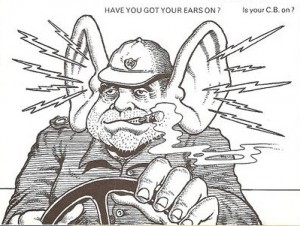 SM: This was a feature called ‘C.B.? – That’s a Big Ten-Four!’ This was a glossary of C.B. radio slang, and I’m afraid I’ve got no idea who wrote it, but it certainly wasn’t me. Looking at the text, it doesn’t really look like Alan either, so my guess would be that it was an anonymous feature-writer working for Grandreams. Alan provided four cartoons that, printed large, stretched a very slim feature to four pages. It appeared in the BJ and the Bear Annual for 1981, and so the artwork would probably have been drawn in the winter of 1980/1981. The feature was reprinted wholesale in The Dukes of Hazzard Annual for 1982.
SM: This was a feature called ‘C.B.? – That’s a Big Ten-Four!’ This was a glossary of C.B. radio slang, and I’m afraid I’ve got no idea who wrote it, but it certainly wasn’t me. Looking at the text, it doesn’t really look like Alan either, so my guess would be that it was an anonymous feature-writer working for Grandreams. Alan provided four cartoons that, printed large, stretched a very slim feature to four pages. It appeared in the BJ and the Bear Annual for 1981, and so the artwork would probably have been drawn in the winter of 1980/1981. The feature was reprinted wholesale in The Dukes of Hazzard Annual for 1982.
PÓM: You worked together on a few strips, starting with Three Eyes McGurk and his Death Planet Commandos. How did that come about?
SM: Actually, the first thing we worked on together was a half-page strip called ‘Talcum Power’ (not ‘Powder’, as it seems to be referred to occasionally), for Dark Star #21 (July 1979). Alan had produced a full page ‘Avenging Hunchback’ strip for #19, which was pretty much a parody of the Superman origin story, and also drawn a second instalment for #20, but the artwork was stolen before it could be printed. So as a replacement for that he then did a half-page ‘Kultural Krime Komix’ in which he committed suicide over the theft, and that was pretty much the end of the Hunchback.
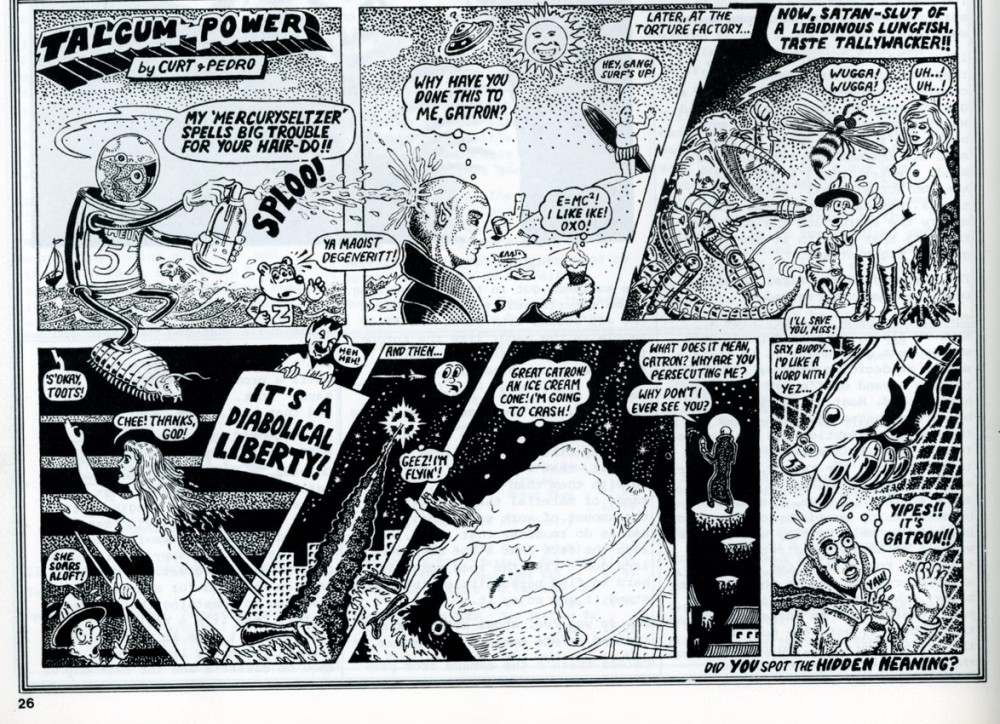 ‘Talcum Power’ was basically a jam session, constructed one stoned weekend when Alan was visiting. We ‘wrote’ as we went along, and then we pencilled bits and pieces alternately, handing the artwork back and forth (along with the joints), though Alan plainly did more of the drawing and filled out the backgrounds in most of the frames. And after he’d gone I inked and lettered the whole thing. We concluded with a tag-line saying ‘Did you spot the hidden meaning?’ to cover up the fact that it plainly didn’t mean anything at all … it was just two hippies out of their minds on drugs having a good time … but for some reason that quite escapes me now, Dark Star liked it enough to publish it. It went under the by-line ‘by Curt & Pedro’ which, as the name hadn’t gone on my ‘Bangkok sex’ article, was the first time, I think, that the Pedro Henry pseudonym appeared in print.
‘Talcum Power’ was basically a jam session, constructed one stoned weekend when Alan was visiting. We ‘wrote’ as we went along, and then we pencilled bits and pieces alternately, handing the artwork back and forth (along with the joints), though Alan plainly did more of the drawing and filled out the backgrounds in most of the frames. And after he’d gone I inked and lettered the whole thing. We concluded with a tag-line saying ‘Did you spot the hidden meaning?’ to cover up the fact that it plainly didn’t mean anything at all … it was just two hippies out of their minds on drugs having a good time … but for some reason that quite escapes me now, Dark Star liked it enough to publish it. It went under the by-line ‘by Curt & Pedro’ which, as the name hadn’t gone on my ‘Bangkok sex’ article, was the first time, I think, that the Pedro Henry pseudonym appeared in print.
Just as an aside, at around this time Alan was also drawing ‘St. Pancras Panda’ for the Oxford underground magazine, The Backstreet Bugle, and I did actually draw (all on my own!) a half-page silent strip for them called ‘Foobl’, in which an ancient city is attacked by a biplane (again, the meaning probably wasn’t apparent). That appeared in Bugle #30, August 1979, again as by ‘Pedro’. Later, in the first episode of ‘Abslom Daak: Dalek-Killer’ for Dr Who, I included a passing reference to a character called ‘C. Henry Foobl’ (derived from Curt Vile, Pedro Henry and Foobl), which was pretty much the sort of in-joke we used to indulge in back then … and later Alan actually used the character in ‘The Stars my Degradation’.
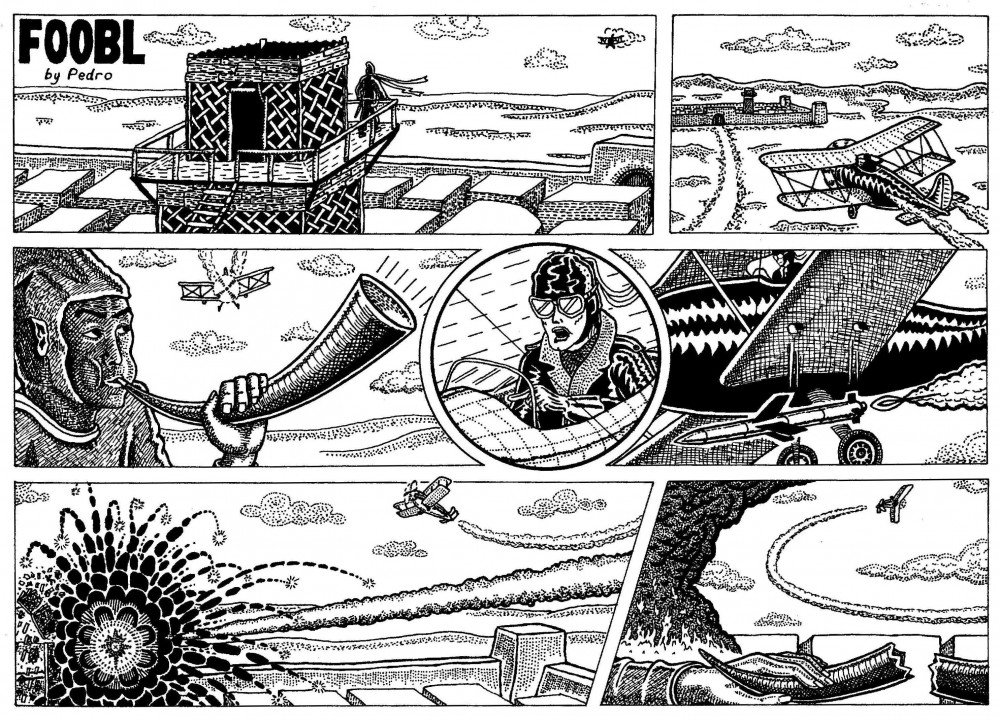 Anyway, Alan liked my inks on ‘Talcum Power’, and then asked me to write a series for him, which turned out to be ‘Three-Eyes McGurk and his Death-Planet Commandos’, which we did as by Curt Vile and Pedro Henry. We ended up with Alan pencilling while I wrote, inked and lettered, and the four episodes appeared in Dark Star #22-#25 (Dec 1979 – Jan 1981). It took absolutely ages to produce … more than a year, though obviously we had professional work to do at the same time … and Alan, trying to be helpful, produced what was virtually finished pencil artwork, including every dot of the stippling, and as the episodes progressed it just got more and more minutely detailed. While most comic-book pages are drawn ‘half up’ (i.e., half as big again as the reproduction size) or ‘twice up’, we were actually producing this ‘a fifth up’ (Alan had somehow got the completely mistaken notion that this was the ‘right’ size for comics), which meant I ended up inking most of it with a rapidograph nib 0.1mm wide. Later, when I showed the printed copies to Gilbert Shelton, who was interested in reprinting ‘McGurk’ in Rip-Off Comix #8, he guessed the originals must be huge … twice up or more … and seemed completely bewildered when I told him the actual size. Alan and I were both thrilled to be in Rip-Off (a real American underground!) and I think we actually got reprint fees of about $20 a page for it. With Dark Star, of course, we got nothing at all, but that had always been the deal from the start. Many years later, while browsing the web, I discovered that someone had actually liked the strip enough that they’d called their band the ‘Death-Planet Commandos’, though what sort of music they played I’m not sure. It would have been quite nice to know …
Anyway, Alan liked my inks on ‘Talcum Power’, and then asked me to write a series for him, which turned out to be ‘Three-Eyes McGurk and his Death-Planet Commandos’, which we did as by Curt Vile and Pedro Henry. We ended up with Alan pencilling while I wrote, inked and lettered, and the four episodes appeared in Dark Star #22-#25 (Dec 1979 – Jan 1981). It took absolutely ages to produce … more than a year, though obviously we had professional work to do at the same time … and Alan, trying to be helpful, produced what was virtually finished pencil artwork, including every dot of the stippling, and as the episodes progressed it just got more and more minutely detailed. While most comic-book pages are drawn ‘half up’ (i.e., half as big again as the reproduction size) or ‘twice up’, we were actually producing this ‘a fifth up’ (Alan had somehow got the completely mistaken notion that this was the ‘right’ size for comics), which meant I ended up inking most of it with a rapidograph nib 0.1mm wide. Later, when I showed the printed copies to Gilbert Shelton, who was interested in reprinting ‘McGurk’ in Rip-Off Comix #8, he guessed the originals must be huge … twice up or more … and seemed completely bewildered when I told him the actual size. Alan and I were both thrilled to be in Rip-Off (a real American underground!) and I think we actually got reprint fees of about $20 a page for it. With Dark Star, of course, we got nothing at all, but that had always been the deal from the start. Many years later, while browsing the web, I discovered that someone had actually liked the strip enough that they’d called their band the ‘Death-Planet Commandos’, though what sort of music they played I’m not sure. It would have been quite nice to know …
 One of the reasons Alan wanted me to script for him was that it would be a challenge, in that he’d have to draw stuff at somebody else’s bidding, rather than just taking the easy option of writing stuff for himself that he knew he could draw. I think he was a bit taken aback when I asked him to draw the Numinous Paddlesteamer, though he responded magnificently. Of course, I’d made a rod for my own back, in that I then had to ink the damned thing! We had a lot of fun: I just let myself off the hook and decided to be as mad as possible, and that drew from Alan probably his best pencils to date. But there was so much work going into everything that by the fourth episode he was sending me the pencils a quarter of a page at a time, so I could be inking while he was pencilling the next quarter, before taping together the four sections of the page. But even so I think we only just managed to get the last episode in on time.
One of the reasons Alan wanted me to script for him was that it would be a challenge, in that he’d have to draw stuff at somebody else’s bidding, rather than just taking the easy option of writing stuff for himself that he knew he could draw. I think he was a bit taken aback when I asked him to draw the Numinous Paddlesteamer, though he responded magnificently. Of course, I’d made a rod for my own back, in that I then had to ink the damned thing! We had a lot of fun: I just let myself off the hook and decided to be as mad as possible, and that drew from Alan probably his best pencils to date. But there was so much work going into everything that by the fourth episode he was sending me the pencils a quarter of a page at a time, so I could be inking while he was pencilling the next quarter, before taping together the four sections of the page. But even so I think we only just managed to get the last episode in on time.
‘McGurk’ saw the first appearance of Pressbutton, a character I’d first come up with in late 1977, and I still actually have the original notebook in which he was first scribbled down:
Character called ‘Press-button’ – he caught Vegan Green Rot years ago, and his body had to be rebuilt from the feet up to above his hips – at the same time they built a button into his chest which, when pressed, give [sic] direct electrical stimulation of the pleasure centres of his brain.
Thus he chats up broads (in bars): “Wanna press my button, honey?”
Thus he is shot to death ‘right on the button’ and dies a happy man – his chest shattered & a hideous grin on his face.
And his companions:
‘Three-Eyes McGurk’
‘Lonesome Henry, the Human Bomb’
 So, as you see, the plot for ‘McGurk’ is pretty much there from the start, apart from Pressbutton’s cleaver-arm, which evolved in the scripting. Incidentally in the very first frame he appeared in, Alan drew the cleaver on the wrong arm! At the time, though, I just thought ‘There’s no way I’m going to sell a character who has orgasms to IPC or Marvel’ (at least not in 1977) so the idea just got put aside, and it was only when I thought I could do it as an underground strip that I dusted it off. It should also be plain from this that Pressbutton was created before the Abslom Daak character I did for Dr Who. Some people seem to have got the impression that the ‘straight’ version of Axel I did in ‘Laser-Eraser & Pressbutton’, for Warrior, was somehow a ‘replacement’ for Daak, when I wasn’t writing that any more; actually it was quite the reverse … Daak was what I wrote because I couldn’t do a straight version of Pressbutton.
So, as you see, the plot for ‘McGurk’ is pretty much there from the start, apart from Pressbutton’s cleaver-arm, which evolved in the scripting. Incidentally in the very first frame he appeared in, Alan drew the cleaver on the wrong arm! At the time, though, I just thought ‘There’s no way I’m going to sell a character who has orgasms to IPC or Marvel’ (at least not in 1977) so the idea just got put aside, and it was only when I thought I could do it as an underground strip that I dusted it off. It should also be plain from this that Pressbutton was created before the Abslom Daak character I did for Dr Who. Some people seem to have got the impression that the ‘straight’ version of Axel I did in ‘Laser-Eraser & Pressbutton’, for Warrior, was somehow a ‘replacement’ for Daak, when I wasn’t writing that any more; actually it was quite the reverse … Daak was what I wrote because I couldn’t do a straight version of Pressbutton.
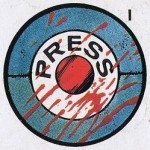 Of course, following my original idea, I had actually had Pressbutton shot ‘right on the button’ at the end of ‘McGurk’ and that, I thought, was that.
Of course, following my original idea, I had actually had Pressbutton shot ‘right on the button’ at the end of ‘McGurk’ and that, I thought, was that.
PÓM: I know Pressbutton turned up in Alan’s The Stars my Degradation strip in Sounds, which you took over writing for him a bit over halfway through its run. What I don’t remember is if he appeared before or after you were writing. So, can you set me straight, and tell me how you ended up taking over the writing of the strip?
SM: What happened was that by the summer of 1980, Alan was winding down his Roscoe Moscow strip, and decided he was going to do The Stars my Degradation, a story pretty much set in the same world as Three-Eyes McGurk (so I guess he must have enjoyed his stint on that … we were actually still drawing McGurk at the time). This sounded good to me, and then a couple of weeks later he phoned me up and asked if he could use Pressbutton in the strip. Well, I wasn’t envisaging using Pressbutton again (he was dead, after all, and I didn’t imagine I’d do any more underground strips) so I said of course he could, and he could use McGurk and any of the other material that he wanted as well. This obviously meant that the Stars material was placed earlier in Pressbutton’s life, and when we eventually did the ‘straight’ version in Warrior, that was set earlier still … so he kind of lived his life backwards. Pressbutton first appeared in the fifth instalment of Stars, and it was Alan who gave him the forename ‘Axel’ … I’d never even thought about a forename for him before that.
 There were 100 episodes of Stars and a couple of Christmas specials, before it concluded in early 1983, by which time Alan was very busy with a lot of other stuff and was struggling to find time for it. So he asked me write the last third of the series (my first episode was 62), which I was more than happy to do (I was also writing Laser-Eraser & Pressbutton for Warrior by then, so there’s an awful lot of overlapping going on here). I think Alan was getting £45 a week for writing and drawing it, and he offered me £10 for the script, so I said sure and started scripting them in batches of four or five episodes each.
There were 100 episodes of Stars and a couple of Christmas specials, before it concluded in early 1983, by which time Alan was very busy with a lot of other stuff and was struggling to find time for it. So he asked me write the last third of the series (my first episode was 62), which I was more than happy to do (I was also writing Laser-Eraser & Pressbutton for Warrior by then, so there’s an awful lot of overlapping going on here). I think Alan was getting £45 a week for writing and drawing it, and he offered me £10 for the script, so I said sure and started scripting them in batches of four or five episodes each.
->PÓM: I note that you’re also doing this interview in sets of questions, rather than one question at a time. So, is this the way you like to work, doing things in lots, rather than a piece at a time?
SM: Umm … I’m making this up as I go along, Pádraig! I’ll do it any way it comes!<-
SM: Alan had given me a very rough idea of where he imagined the story-arc going, which was pretty much a ‘back-of-an-envelope’ size synopsis, and after that I just let myself loose and tried to make it as crazy as possible. One of the things Alan had been doing with earlier episodes of the strip was parodying things like The X-Men … but I’m really not interested in parody, so I wanted to make it more of a comedy-adventure in the style of McGurk. And once again, I was challenging Alan to draw all kinds of weird shit, like rubber Episcopalians and battles between newts and Amazons and, of course, the Immolato Tomato … so I was having lots and lots of fun and Alan was probably starting to think this was a really bad idea. And we were trying to get away with as much as we could, of course, which meant the strip was frequently censored, sometimes quite crudely, with whole frames deleted, which we weren’t very pleased about.
->PÓM: What sort of things were they censoring the strips for? I’d have though that the editorial imperatives at Sounds at that time would have been quite relaxed.
SM: We just had too much sexual content for them. Alan had something of a tendency to draw penises everywhere, which usually ended up with ‘censored’ labels stuck over them, and they were obviously less interested in showing acts of sexual congress than we were. There was one occasion where Alan had decided to render the episode in pencil and they simply rubbed out a scene they didn’t like. I should point out that this had been going on before I started writing the strip as well, but I admit it got worse when I took over … but when the story moved to ‘Gomorrah’s World’, on the planet Depravity, what can one expect?<-
SM: Sounds also managed to lose one entire episode, though as this was only about Pressbutton and Harry the Hooper practising before their final showdown, probably no one noticed … except me, and I still had the script, of course.
->PÓM: Are we likely to ever see the script for that episode that Sounds lost? And is there any chance Alan could be talked into drawing it?
SM: I’ve scanned the script, and also the full script for an episode where they deleted a couple of frames entirely. The reason the scans start part way down the page is because I was writing these in batches, rather than starting a new script on a new page. We’ve no objection to these scripts being put online, but I think I can say that the chances of Alan drawing the missing script are pretty close to absolute zero.<-
[Sorry for the quality of these, folks, but this as good as I have them, I’m afraid.]
PÓM: But you were just scripting now, rather than contributing to the art?
SM: The only other art involvement I had was with the special ‘Christmas on Depravity’ story that we did in December 1981, which was just before I took over scripting the strip. The script was mainly by Alan, though we’d discussed the story when he’d been down to visit previously, and there are one or two of my gags in there. It was also the one that ‘reunited’ Axel and Mysta Mystralis, even though they hadn’t actually appeared in Warrior by this point.
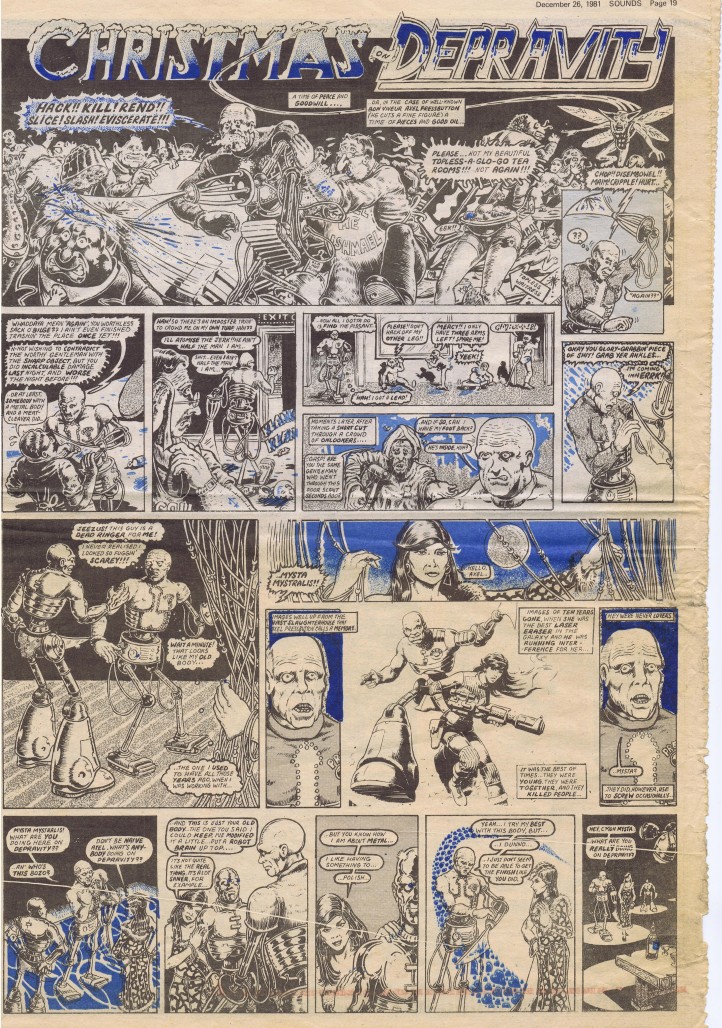 It was a four-page story, and thus the equivalent of eight normal half-page episodes, and it had a second-colour overlay on every page. It was due for delivery on a Monday shortly before Christmas, and Alan turned up at my place on the Friday with about half the strip drawn and none of the colour overlays done; I’m not even sure if he’d actually scripted absolutely everything. So we basically just worked through the weekend on it, with Alan drawing the foregrounds and myself contributing bits of background, often on the colour overlays, where we were just drawing in black ink on tissue-paper overlays. So I was tracing pictures of Japanese monsters, the interior of blood vessels, rains of carrots and anything else I could think of. It was basically work, fall asleep and then work again, but Alan left on the Monday morning to take a finished job into the Sounds office, and I went back to bed. The only trouble was, we’d been told that the overlay would be red on the first and fourth page and blue on the second and third, so we designed the overlays with those colours in mind. Of course, it came out with the colours reversed and, worse than that, the tissue-overlays had actually shrunk under the hot lamps in the scanning process, so everything was out of register, too! We were not amazingly happy about this. But those are the sort of things where you look back and think ‘did we actually do that?’
It was a four-page story, and thus the equivalent of eight normal half-page episodes, and it had a second-colour overlay on every page. It was due for delivery on a Monday shortly before Christmas, and Alan turned up at my place on the Friday with about half the strip drawn and none of the colour overlays done; I’m not even sure if he’d actually scripted absolutely everything. So we basically just worked through the weekend on it, with Alan drawing the foregrounds and myself contributing bits of background, often on the colour overlays, where we were just drawing in black ink on tissue-paper overlays. So I was tracing pictures of Japanese monsters, the interior of blood vessels, rains of carrots and anything else I could think of. It was basically work, fall asleep and then work again, but Alan left on the Monday morning to take a finished job into the Sounds office, and I went back to bed. The only trouble was, we’d been told that the overlay would be red on the first and fourth page and blue on the second and third, so we designed the overlays with those colours in mind. Of course, it came out with the colours reversed and, worse than that, the tissue-overlays had actually shrunk under the hot lamps in the scanning process, so everything was out of register, too! We were not amazingly happy about this. But those are the sort of things where you look back and think ‘did we actually do that?’
->PÓM: You did at one stage interview yourself in the guise of Pedro Henry, for Warrior. How did that come about?
 SM: Dez wanted to do a series of text fe
SM: Dez wanted to do a series of text fe
Blog: PW -The Beat (Login to Add to MyJacketFlap)
JacketFlap tags: Top News, Comic Strips, Chris Ware, Add a tag
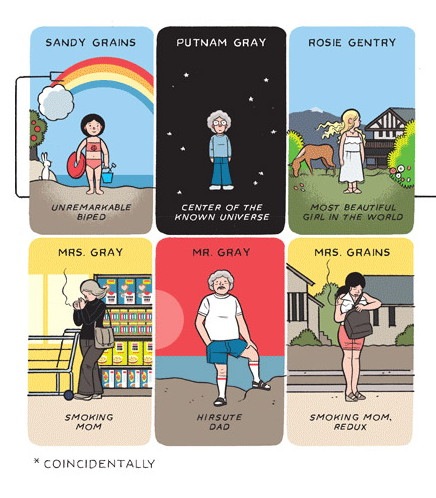
The Guardian is serializing a new Chris Ware comic, called The Last Saturday. If there was a contest to chose the most Chris Ware-like title for a new Chris Ware comic “The Last Saturday” would be near the top. According to the site:
A brand new graphic novella by the award-winning cartoonist Chris Ware, tracing the lives of six individuals from Sandy Port, Michigan, published in weekly episodes. A new instalment will appear on this page every Saturday.
Given the size and storytelling methods of Ware’s work, I found the next sentence just as revealing:
Viewing on mobile? Scroll down to the thumbnail image and use the red, touch-controlled viewfinder to navigate around the full strip
That’s right, beeyotch, they had to devise some kind of viewer just to read what you can hold in your hands in the newspaper.
Anyway this looks amazing, duh.
Blog: PW -The Beat (Login to Add to MyJacketFlap)
JacketFlap tags: Comic Strips, Top News, Add a tag
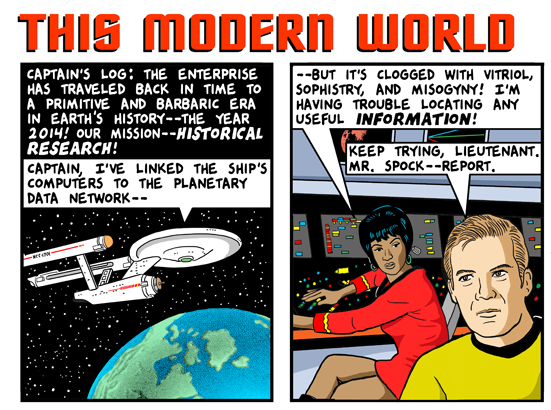
Tom Tomorrow has done it again with a classic Trek-theme cartoon.
Blog: PW -The Beat (Login to Add to MyJacketFlap)
JacketFlap tags: Comic Strips, Top News, Add a tag

When I first saw the Rocket Raccoon and Groot toys at Toy Fair back in February—or maybe earlier when I first saw the Guardians of the Galaxy footage—I was pretty sure that they would become, to use a banned word, “iconic” but I had no idea they’d be embraced as part of the pop culture dictionary so quickly, as shown by The New Yorker’s Daily Cartoon by Benjamin Schwartz.
I hope Bill Mantlo is smiling somewhere.
Blog: Perpetually Adolescent (Login to Add to MyJacketFlap)
JacketFlap tags: comic strips, illustrated novels, Michael Gerard Bauer, New Book Releases, Dimity Powell, Anh Do, Book Reviews - Childrens and Young Adult, Joe Bauer, Eric Vale Epic Fail, Scholastic Austra, Secret Agent Derek Danger Dale the Case of Animals Behaving really really badly, WeirDo 2 Even Weirder, Add a tag
Junior book series – do they sell? Often it is a question of semantics. Do kids love them? That answer is a no-brainer and when they are as first-rate as these are, it’s no wonder why. Hot on the heels of the sensationally popular Eric Vale series by Michael Gerard Bauer is Secret Agent Derek […]
Add a CommentBlog: PW -The Beat (Login to Add to MyJacketFlap)
JacketFlap tags: News, Legal Matters, Cartoons, Videos, Culture, Commentary, Breaking News, Comic Strips, bill watterson, The Legal View, Add a tag
Clickhole, the Onion’s answer to Buzzfeed and Clickhole, has posted an audacious NSFW video parody, “If You Grew Up With ‘Calvin and Hobbes,’ You Need to Watch This Now.” Spoilers below for those of you who aren’t already in custody haven’t seen it yet:
Clickhole’s video of Calvin and Hobbes having sex pretty much nukes anything an art critic has ever described as transgressive, but in so doing it also raises a serious legal concern. As you may recall, under 18 U.S. Code Sec. 1466A, U.S. law banning child pornography is not limited to visual depictions of real children. This has already led to prosecutions for possession of comics or cartoons – in fact, animated child sex is reportedly being used as, well, clickbait by law enforcement.
Could watching the Clickhole Calvin and Hobbes video get you sent to jail?
Let’s go exploring!
One key aspect of current U.S. law — setting aside other countries that may have more expansive prohibitions – is that it reflects an adaptive response to the Supreme Court’s conclusion that earlier versions were too broad in ways that violated the First Amendment. As a result Section 1466A only bans non-realistic visual depictions such as the Calvin and Hobbes video if they are obscene or lack serious artistic, literary, political or scientific value.
Here, in brief, is why Congress went with that language. In a series of decisions several decades ago, the Supreme Court came up with a standard for obscenity that, it believes, passes constitutional muster. The standard is known as the Miller test for determining obscenity, and it has three key components: the material appeals to prurient interest, is patently offensive and lacks serious literary, artistic, political or scientific value. By echoing this language, Congress hoped – and so far has mostly succeeded – in establishing a standard for visual depictions of minors in drawings, cartoons, sculptures or paintings that would survive a constitutional challenge.
1466A(a)(2) and (b)(2) ban, among other things, graphic images of a minor engaging in actual or simulated bestiality that lack serious artistic, literary, political or scientific value. Before we get to the question of value, it’s worth noting that the statute goes on to define “graphic” to refer to images in which “a viewer can observe any part of the genitals or pubic area of any depicted person or animal.” In essence, these sections take a shortcut past the prurient and patently offensive elements of the obscenity test, which are determined by community standards, by providing an absolute bright-line standard.
Watch the Clickhole Calvin and Hobbes video carefully and you’ll see that it arguably does not portray the genitals or pubic area of either character – the very sort of thing that a strategic company lawyer might tell a company producing such a video to do if it was determined to post it. That’s not a slam-dunk conclusion, though. Calvin is drawn in a way that resembles the iconic “Love Is …” one-panel cartoon, the product of a time before contemporary anti-child-porn laws as well as a strip that does not depict minors in sexual situations, at least in authorized versions.
Section 1466A(a)(1) and (b)(1) are somewhat more expansive. These provisions prohibit an obscene depiction of sexually explicit conduct, which extends to simulated bestiality and other sexual activity whether or not the genitals or pubic area appear.
What makes determining whether material is obscene particularly hard to determine is that the test looks to community standards – technically in regard to determining whether material appeals to the prurient interest or is patently offensive, but the community sensibility also tends to come into play in assessing whether a reasonable person would find that the material lacks socially redeeming value. This applies not only to a federal statute such as Section 1466A, but any state anti-obscenity or anti-child pornography laws under which the Calvin and Hobbes cartoon could be assessed.
This reliance on community standards has had the effect of balkanizing U.S. obscenity law. What is obscene in one jurisdiction can be perfectly legal in another. Case in point: the Christopher Handley case, which involved a manga collector. The Iowa district judge in that case concluded that 1466(a)(2) and (b)(2) are unconstitutional, but the 11th Circuit U.S. Court of Appeals, which covers Florida, Georgia, and Alabama, expressly disagreed.
In short, if the science of law is, to quote Oliver Wendell Holmes, an art of prediction, the current constitutional definition of obscenity is a Magic 8 Ball.
Which also brings us to 18 USC 2252C, a related provision that prohibits knowingly embedding words or digital images into the source code of a website with the intent (a) to deceive a person into viewing material constituting obscenity or (b) to deceive a minor into viewing material harmful to minors on the Internet. If one is dealing with a judge or jury likely to conclude that the Calvin and Hobbes cartoon is obscene, there is an equally significant risk of being found guilty of using misleading words (the clickbait headline) and images (the still frame before playing) to trick either an adult or a minor into clicking play.
So to answer the question of whether Clickhole’s Calvin and Hobbes Cartoon is illegal, I’d have to say it depends – on the jurisdiction, on the prosecutor, the judge, the jury and the case presented by the defendant’s lawyers. And again, the rest of the world is not bound by our First Amendment jurisprudence and its definition of obscene, so there could be a greater risk elsewhere. There’s a substantial possibility, of course, that nothing will ever happen to Clickhole or any viewers of this video, but it’s not a risk that many lawyers would want their clients to take.
Blog: PW -The Beat (Login to Add to MyJacketFlap)
JacketFlap tags: Comic Strips, Top News, Michael Kupperman, Add a tag
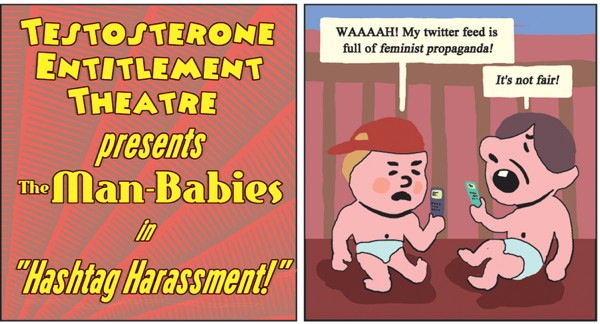
Michael Kupperman and David Rees have been contributing a biweekly comic called “See Something, Say Something” to the New York Times editorial page, but this week it didn’t appear, for reasons explained by Kupperman:
Some of you may have noticed that David Rees and I have been producing a comic for the New York Times Week in Review section called “See Something, Say Something” every other Sunday… but we’re not in today’s paper. That’s because they objected to David’s script this week and refused to consider printing it… the subject matter (male rage, online bullying & the hashtag #yesallwomen) was “too sensitive.”
I disagree very strongly with that decision, because I feel David was making a point that deserves to be made. So I went ahead and completed the script as written; here it is, see for yourselves.
You can see the whole thing in the link, but it’s nothing more than you see every day on Tumblr and so on, with extra bonus points for two really funny guys, Rees and Kupperman, poking fun at their own cohort. But maybe peeing babies was too much for the Times? Anyway…disappointing.
Blog: PW -The Beat (Login to Add to MyJacketFlap)
JacketFlap tags: Comic Strips, Top News, Add a tag
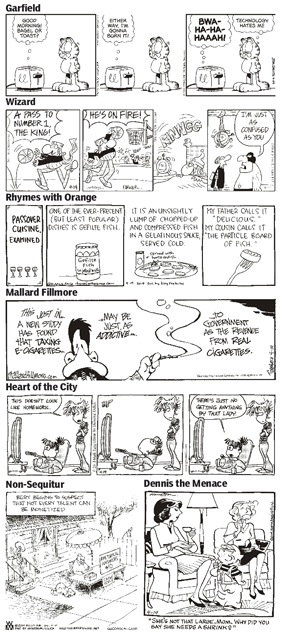
Media watchdog Jim Romanesko was the first to catch that the New York Post had dropped its comics section. The section was wizened with age and neglect—only seven meagre strips—but evidently the Post dropped the page and hoped no one would notice. One who did was King Feature’s editor Brendan Burford:
“It caught everyone by surprise,” King Features comics editor Brendan Burford tells me. “We got zero notice.”
King, which sold three comics to the Post, was told of the move on Tuesday – the day the strips vanished. (The paper had only seven strips; King sold “Mallard Fillmore,” “Rhymes with Orange,” and “Dennis the Menace” to the Post.)
The Post hasn’t explained why it killed the section, says Burford, and King is trying to get the strips back into the paper.
“Our conversation is ongoing. …I would be shocked if they’re not hearing from readers” about the missing comics. (There’s not much of an outcry on Twitter.)
The move is especially grieving to me as the Post and the Newark Star Ledger are the papers I read as a child and the playgrounds where I learned of such Titans as Cathy and Tumbleweeds. But newspaper strips have been on the sick list for a long time, and thus far public outcry has been restricted to bloggers. Michael Cavna also investigated the case but came up with few clues.
Now, I’m not yet convinced that few people noticed. I’d hazard the scenario that thousands of New York Post readers looked to feed their daily comics demi-fix in recent days and, flustered and flummoxed, just gave up the hunt as their subway stop approached or a neighboring de Blasio headline beckoned.
I mean, it’s not as if — if reports are accurate — the Post clearly alerted its readers of the dramatic change or anything. Not even a ransom note, apparently.
If you want your strips back, complain often and early.
Blog: PW -The Beat (Login to Add to MyJacketFlap)
JacketFlap tags: Awards, Comic Strips, Top News, Add a tag
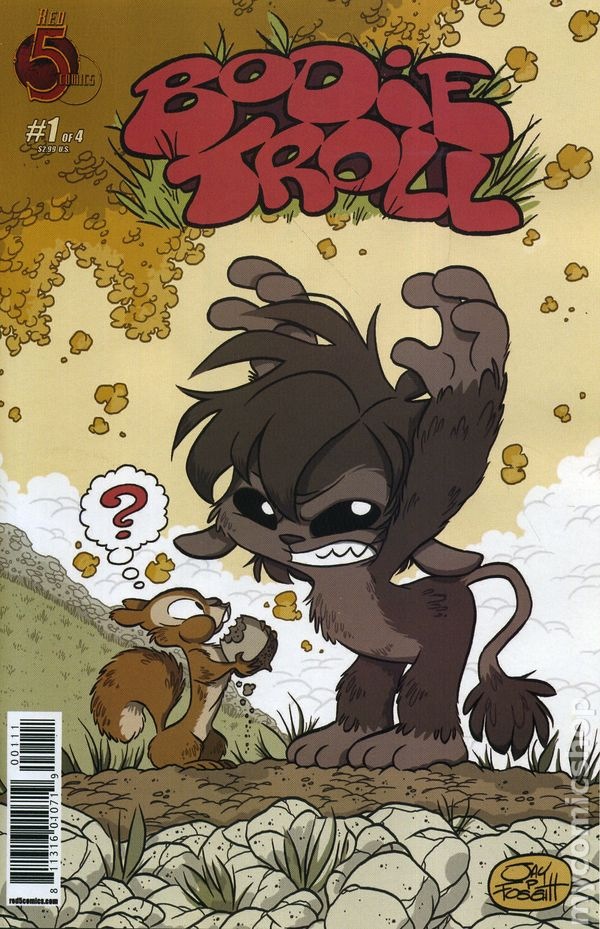
The “Reuben Awards”, aka the divisional awards presented by the National Cartoonist Society to deserving creators in comic strips, illustrations, animation and even comics, have been announced. The MAIN Rueben nominees (given to a deserving cartoonist for a lifetime of work) were announced a few weeks ago, are:
Wiley Miller (NonSequitur)
Stephan Pastis (Pearls Before Swine)
Hilary Price (Rhymes with Orange)
Mark Tatulli (Lio)
The rest of the nominees have come out and here they are. Of some note — the webcomics category, which has been a source of some confusion and controversy but now has a board of advisors and is now divided into short form and long form categories. The awards will be presented Saturday, May 24th at the annual NCS meeting, this year held in San Diego.
(Above an image from Jay Fosgitt’s Bodie Troll, probably the least known of the comic book nominees.)
Editorial Cartoons
• Clay Bennett
• Adam Zyglis
• Mike Ramirez
Newspaper Illustration
• Bob Eckstein
• Miel Prudencio Ma
• Dave Whamond
Feature Animation
• Mike Giamo: Production Design Frozen (Disney)
• Hayao Miyazaki: Director, The Wind Rises (Disney)
• Jonathan del Val: Animator of Lucy character, Despicable Me 2 (Illumination)
TV Animation
• Craig McCracken, Wander Over Yonder (Disney)
• Paul Rudish, Disney Channel’s Mickey Mouse shorts (Disney)
• Douglas Sloan And Art Edler Brown, Dragons: Riders of Berk (Dreamworks)
Newspaper Panels
• Dave Coverly
• Scott Hilburn
• Mark Parisi
Magazine Gag Cartoons
• Matt Diffee
• Bob Eckstein
• Mike Twohy
Advertising/Product Illustration
• Cedric Hohnstadt
• Sean Parkes
• Rich Powell
Greeting Cards
• Glenn McCoy
• Mark Parisi
• George Schill
Comic Books
• Sergio Aragones, Sergio Aragones Funnies
• Jay Fosgitt, Bodie Troll
• Chris Samnee, Daredevil
Graphic Novel
• Dan E Burr, On The Ropes
• Rick Geary, Madison Square Tragedy
• Andrew C Robinson, The 5th Beatle
Magazine Illustration
• Daryll Collins
• Anton Emdin
• Dave Whamond
Online — Long Form
• Jenn Manley Lee, Dicebox
• Dylan Meconis, Family Man
• Eddie Pittman, Red’s Planet
• Jeff Smith, Tuki
Online — Short Form
• Jim Horwitz, Watson
• Ryan Pagelow, Buni
• Mike Twohy, New Yorker Online
Book Illustration
• Matt Davies
• William Joyce
• CF Payne
Newspaper Comic Strips
• Isabella Bannerman, Six Chicks
• Terri Libenson, Pajama Diaries
• Mark Tatulli, Lio
Blog: PW -The Beat (Login to Add to MyJacketFlap)
JacketFlap tags: Events, Cartoonists, Comic Strips, bill watterson, Richard Thompson, Top News, Billy Ireland library, Add a tag
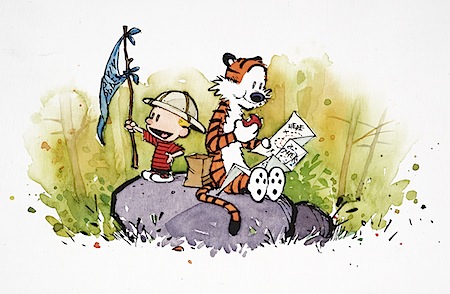
Yep you head me right. This weekend the Billy Ireland Cartoon Museum and LIbrary in Columbus Ohio will open two incredible shows,
The Irresistible Force Meets The Immovable Object: A Richard Thompson Retrospective and Exploring Calvin And Hobbes and in advance of the show Jenny Robb has interviewed Bill Watterson and Caitlin McGurk has interviewed Richard Thompson. You’ll obviously want to read the whole thing. Watterson, in an extremely rare interview, revisits his greatest creation:
JR: It’s been almost 30 years since Calvin and Hobbes launched, and almost 20 since it ended. How did it feel to revisit the strip for this exhibition?
BW: Oh, it’s fairly weird. There’s a sort of jet lag when you time-travel to your own past.
He also talks about the current state of cartooning, wondering if any can find an audience with so much competition but pointing out “The gatekeepers are gone, so the prospect for new and different voices is exciting. Or at least it will be if anyone reads them. And it will be even more exciting if anyone pays for them. It’s hard to charge admission without a gate.”
Richard Thompson calls the end of print “sad and confusing” but adds “Comics are, as they say, blowing up. The chance for invention is great but the chance for moneymaking is small. Right now creators are pretty much screwed.”
SO perhaps look at the dual show as the last celebration of an artistic and financial era era of comic strips now as lost as vaudeville and radio drama. OR to be more upbeat, a celebration of two amazing artists who have unforgettably touched our hearts.
The opening for the exhibits is tomorrow night. We’ll be awaiting the tweets and blogs posts eagerly.
This is a great weekend for comics in Columbus. There’s also a Lilli Carré exhibits at the Columbus Museum of Art.
Blog: PW -The Beat (Login to Add to MyJacketFlap)
JacketFlap tags: Cartoonists, Comic Strips, bill watterson, Top News, Stripped, Add a tag

While the odds are still low on him showing up to fulfill his duties as Grand Prix winner, Bill Watterson is slightly less reclusive of late than he has been for most of the 19 years since he quite Calvin and Hobbes. For instance he has drawn the poster for the film STRIPPED, a documentary about comic strip artists which also features an interview with Watterson. The piece is billed as Watterson’s first cartoon in 19 years (he’s shown a painting since then, a contribution to Project Cul-de-sac.)
Comic strips fans were probably already on board to see the movie, directed by Dave Kellett and Fred Schroeder, but the art by Wawtterson won’t hurt. Other creators interviewed in the film include Chris Hastings (Dr. McNinja), Anthony Clark (Nedroid), Danielle Corsetto (Girls With Slingshots), Dylan Meconis (Family Man), Kate Beaton (Hark, a Vagrant!), Greg Evans (Luann), Jeff Keane (The Family Circus), Jeff Smith (Bone), Jim Davis (Garfield), Scott Kurtz (PvP), Meredith Gran (Octopus Pie), Ryan North (Dinosaur Comics), Bill Amend (Foxtrot), Matt Inman (The Oatmeal), Mike Krahulik and Jerry Holkins (Penny Arcade), Cathy Guisewite (Cathy) and Mort Walker (Beetle Bailey).
Blog: PW -The Beat (Login to Add to MyJacketFlap)
JacketFlap tags: Comics, games, Comic Strips, The Far Side, typos, captions, Dennis the Menace, Top Comics, Add a tag
In 1983, the Dayton Daily News accidentally switched the captions for “Dennis the Menace” and “The Far Side”. And then, a few days later, they did it again.
So that got me to thinking… Scott McCloud invented “Five Card Nancy“, using panels from Ernie Bushmiller’s “Nancy” comic strip.
Could I make a similar game, using the real-world example from the Dayton Daily News? Of course!
So here it is!
The Rules:
- Only single panel comics can be used, and only those with captions below the art. In panel spoken text is not allowed. Silent panels may be included.
- At least two comics are used. If you wish to make it more interesting, you can use more, but the number should be even.
- Normal strips should be offset by the more unusual. For every “Dennis the Menace” there should be a “Far Side”. (See below for suggestions.)
- There should be at least 100 examples from each comic (100 panels, 100 captions). The more people who play, the more comics or examples should be used. Random examples may be used, but should be in equal proportion of “normal” to “unusual”.
- The playing deck has two parts: comics and captions.
- Each player is dealt four cards from each deck.
- Play begins with a player presenting a match of a caption with a panel.
- Other players then try to “edit” the match by replacing either the comic or the caption with a card from his/her hand. Play ends when none can improve on the mismatched comic.
- All players then refill their hands and play continues with the next player.
- If you need to keep score, post the mix-matched creations to your social network feed (Facebook, Pinterest, Twitter, Friendster, Usenet). Score points for each “like” or re-share.
Recommended comics:
“normal” comics
Dennis the Menace
Marmaduke
Heathcliff
Family Circus
Berry’s World
Brother Juniper
Andertoons
“unusual” comics
The Far Side
Bizarro
New Yorker
Herman
Willy ‘n Ethel
Close to Home
Playboy
Blog: PW -The Beat (Login to Add to MyJacketFlap)
JacketFlap tags: Comic Strips, Art Comix, Kickstarter, Guy Adams, Top News, Crowdfunding, Comics Collections, Jimmy Broxton, Add a tag
Here’s a real Kickstarter based on a fake artist whose real work has been forged by Guy Adams and Jimmy Broxton, both of whom are real living people and are not figments of fiction, unlike the artist who didn’t draw this comic strip, because he never existed. Got that? This is GOLDTIGER.
I’ll explain it properly. The idea of the Kickstarter is that Adams and Broxton have restored a classic, controversial comic strip created in the 1960s by artist Antonio Barreti and writer Louis Shaeffer. The strip was commissioned run in a national newspaper, but was deemed too risque and scandalous for publication. The strip was locked out of circulation, Barreti had a breakdown and spent four years in a rehab clinic in Turin. Shaeffer continued to send him new scripts, however, and the team kept creating more stories for their characters. Shaeffer sadly died, and following his death, Barreti vanished.
The stories have just been collected together, however, and restored. The artwork is enhanced and lettering fixed, and the first volume of stories will be put out via Kickstarter.
— The thing is, Barreti and Shaeffer don’t exist, and never did. GOLDTIGER is an all-new creation from Adams and Broxton, which collects 128 pages of comics into a hardcover book. But not just the strips are collected in the book: the idea is that readers will also be able to trace the fictional life story of the two creators, and their journey whilst seeing that reflected in the story. While the strips progress in a 1960s style, you’ll also see how Barreti and Shaeffer’s personal lives affected GOLDTIGER itself. So in essence, you’re getting two stories – the comic strips, which tell spy action adventures with more than a hint of sex; and the assorted bits and pieces which tell the story of fictional GOLDTIGER creators Barreti and Shaeffer.
It’s a madcap idea for a comics project, and the Kickstarter is currently 3/4 funded, with only three days to go. Head on over to the Kickstarter, and have a read of the concept in more detail! Broxton is a fantastic artist, and Adams a great writer. This is a real high concept, but one which looks well worth trying out.
View Next 25 Posts







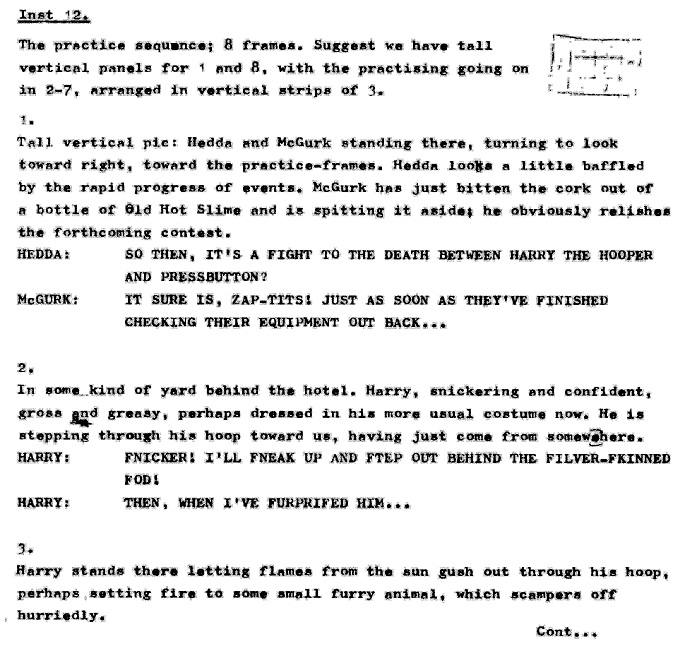





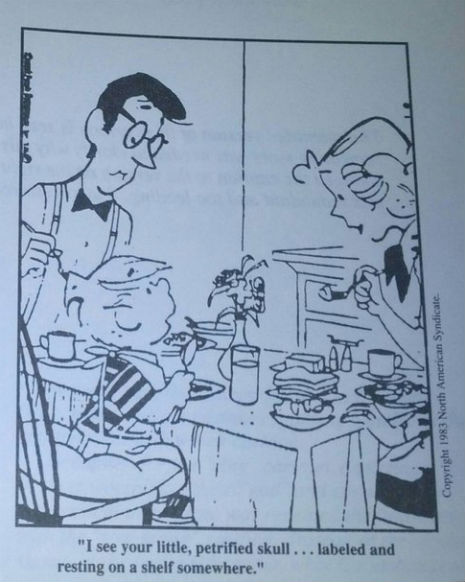

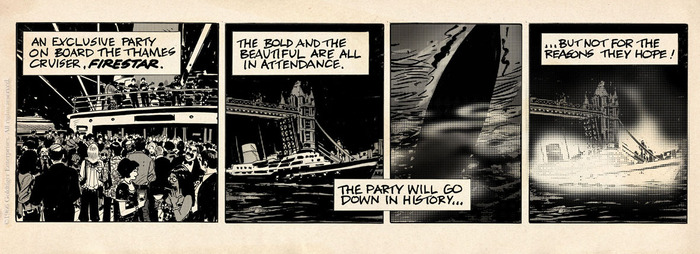
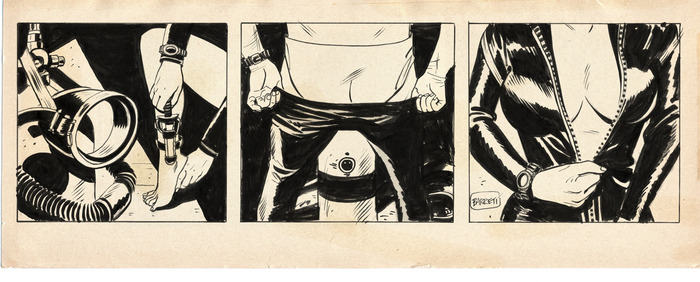
That actually made me smile. Way to go Dave.
You got #34, Rich got #33, and I got #19 — http://www.savagecritic.com/uncategorized/sure-happy-to-help-plug-cerebus-in-hell-when-you-do-it-like-this/ — Where are all of the rest?!?!
-B
Wow, so jealous!
http://momentofcerebus.blogspot.com/2016/06/cerebus-in-hell-retailer-exclusives.html